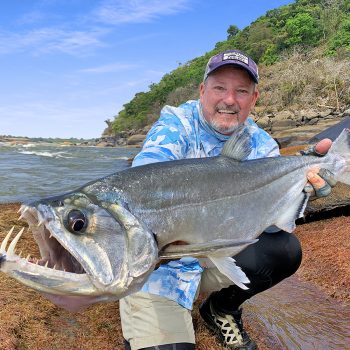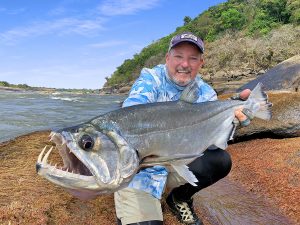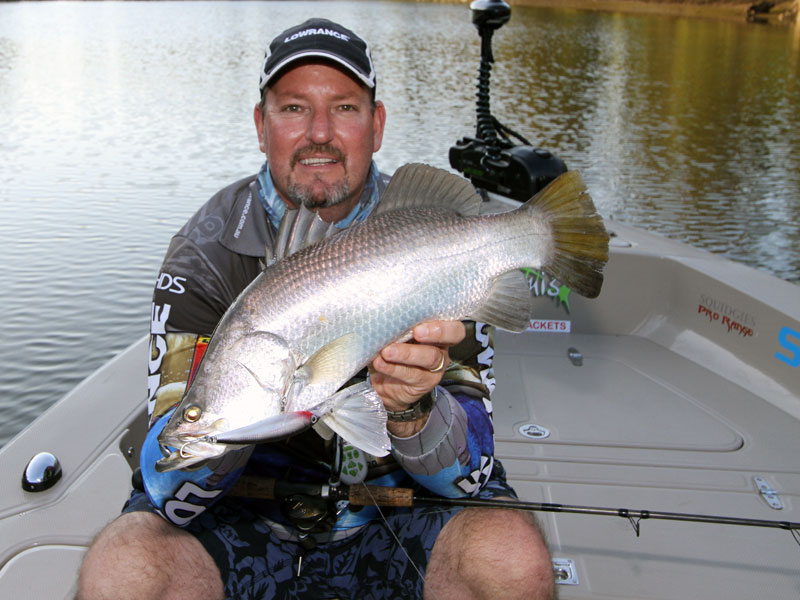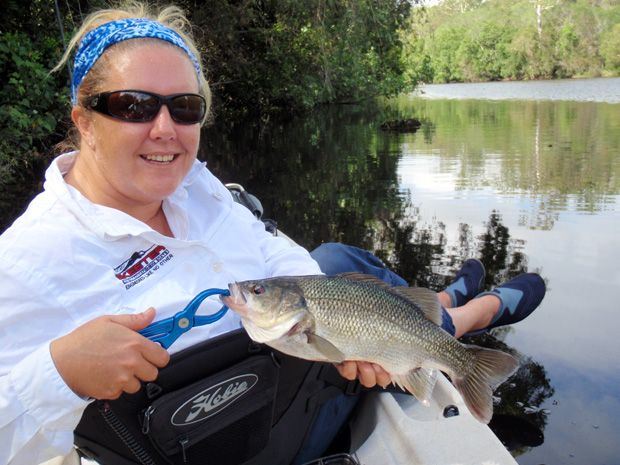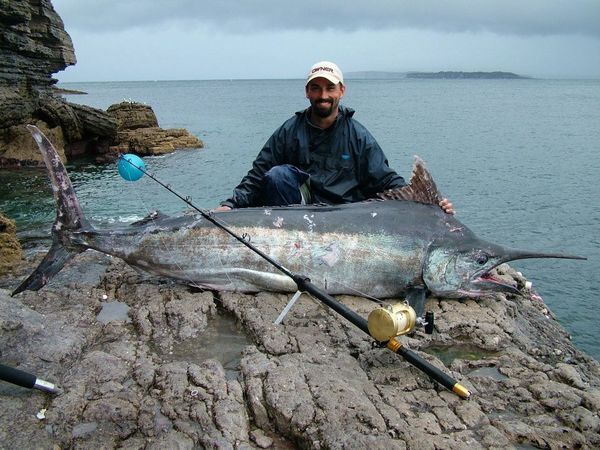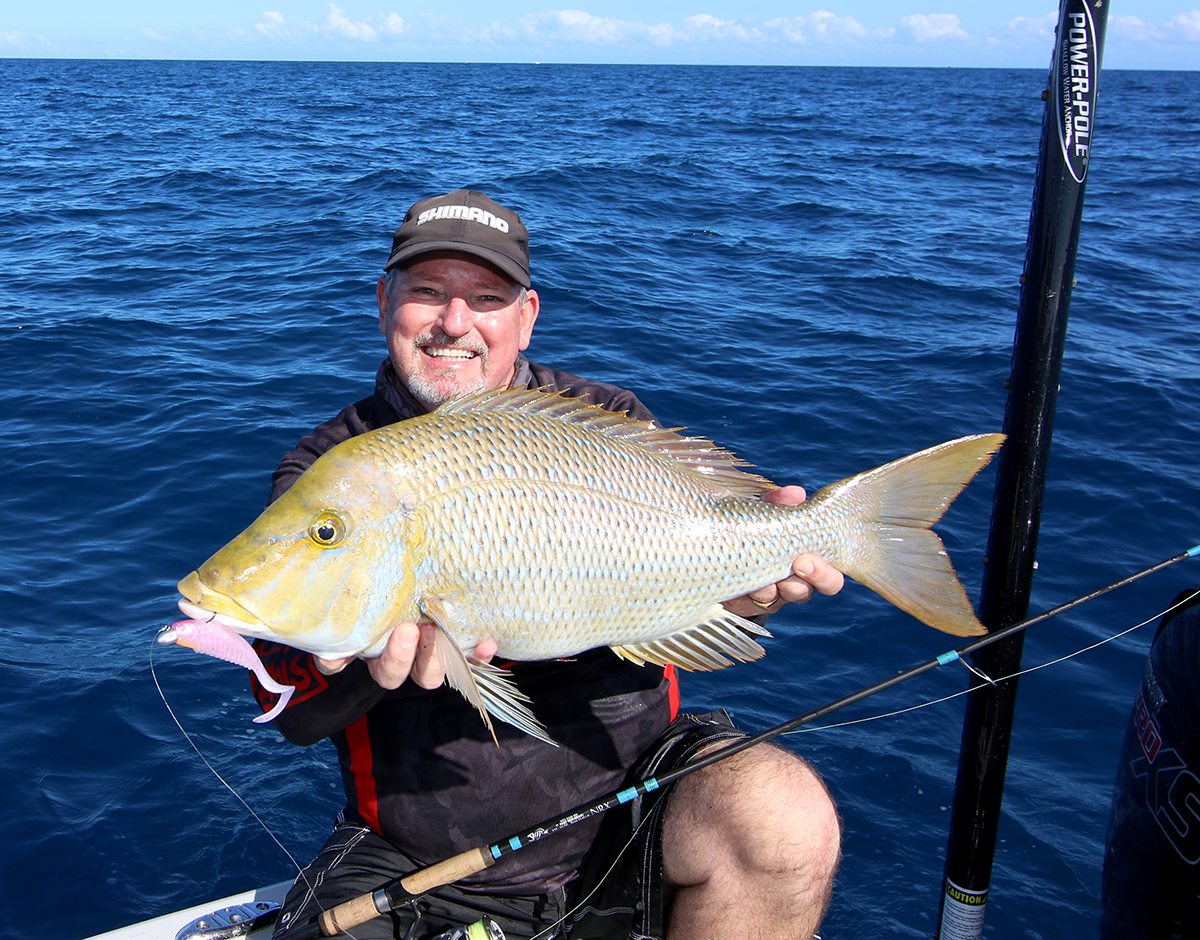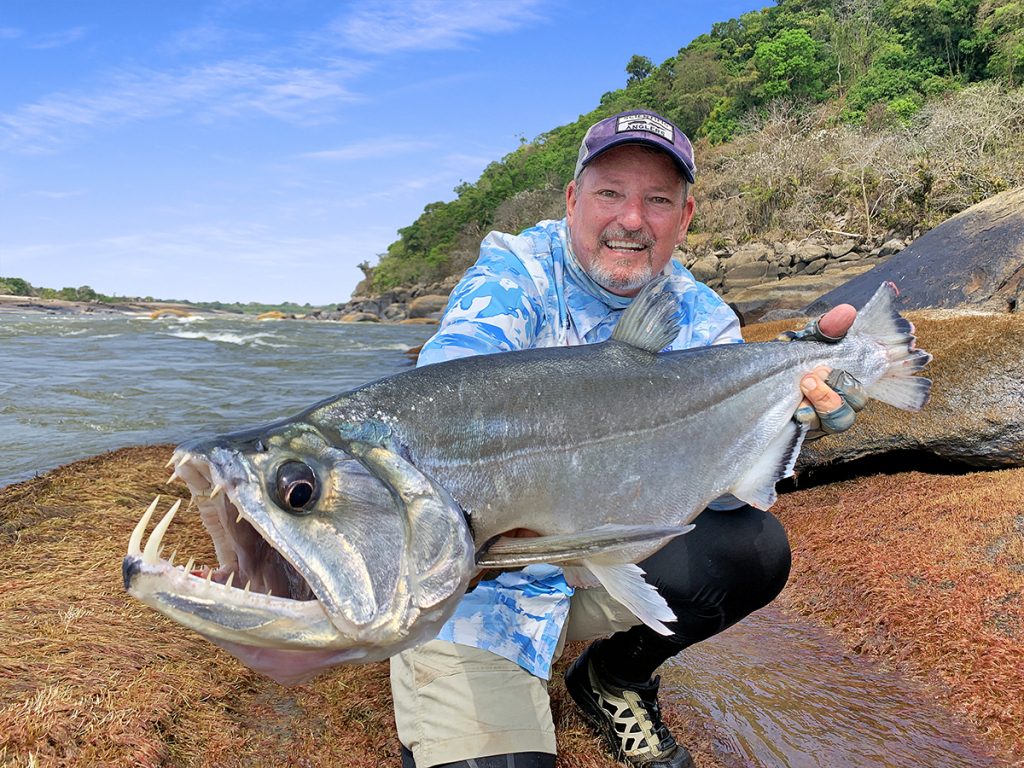
I have always loved travelling to experience new cultures and fishing for different species. Fishing has led me to some fantastic locations I would never have imagined visiting if not for the pursuit of a specific species. The bonus is that the best fishing is often found in remote places where the habitat and local people have had minimal environmental impact.
I have been privileged to have had some fantastic adventures fishing around our wonderful country as well as some far-flung destinations overseas. But I still have a long list of species on my “bucket list”, and peacock bass and Payara were the next two at the top.
If you are going to target a particular species and dedicate the time and money towards catching it, then you need to do your research to put you in the right place at the right time with the right gear. Then if you are going to catch something – why not go with a chance at encountering a trophy-sized one at the same time!
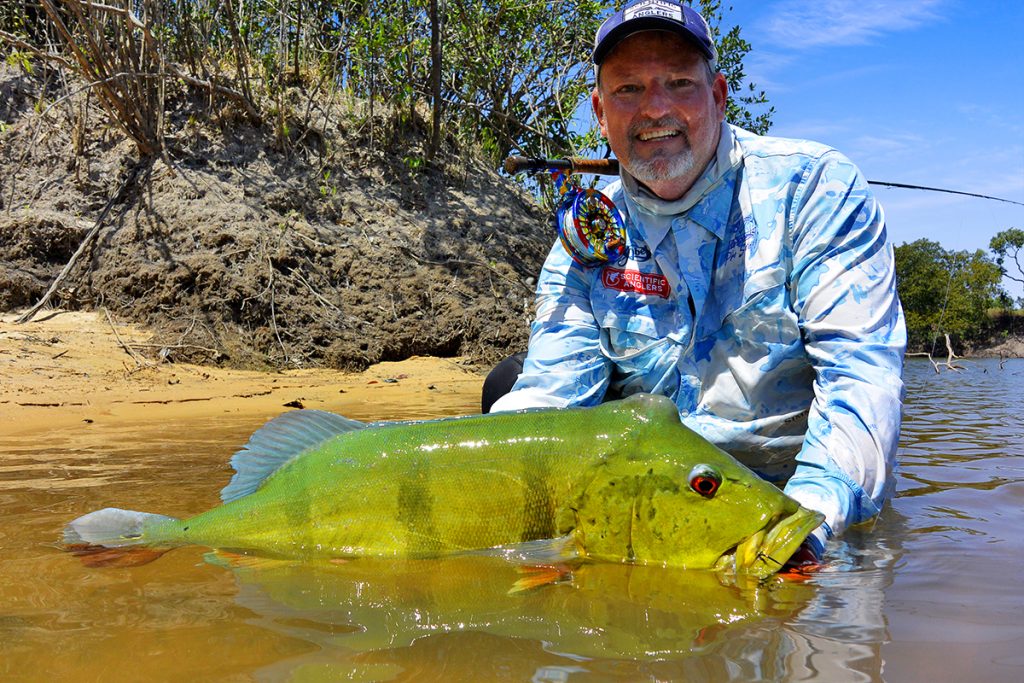
When researching peacock bass and payara fishing, it doesn’t take long for Steve Townson’s name to come up. Steve operates Amazon-Angler.com which is a specialist fishing travel agency focused on the Amazon region, Steve has been travelling and fishing throughout the Amazon for 21 years, and has presented two fishing Television series in the Amazon and is a fishing and wildlife addict!
Based on my brief to target both peacock bass and Payara, Steve quickly suggested we book a brand new destination in Colombia located on the Orinoco River with access to several nearby tributaries. Steve said, “For the sheer size and quality of fish, this trip offered the lot. The Rio Orinoco has jet-propelled Payara/Vampire Fish to over 30lbs, beautiful Golden Sardinata of world record proportions, huge Silver Pacu, big Black Piranhas and Giant Catfish too”!
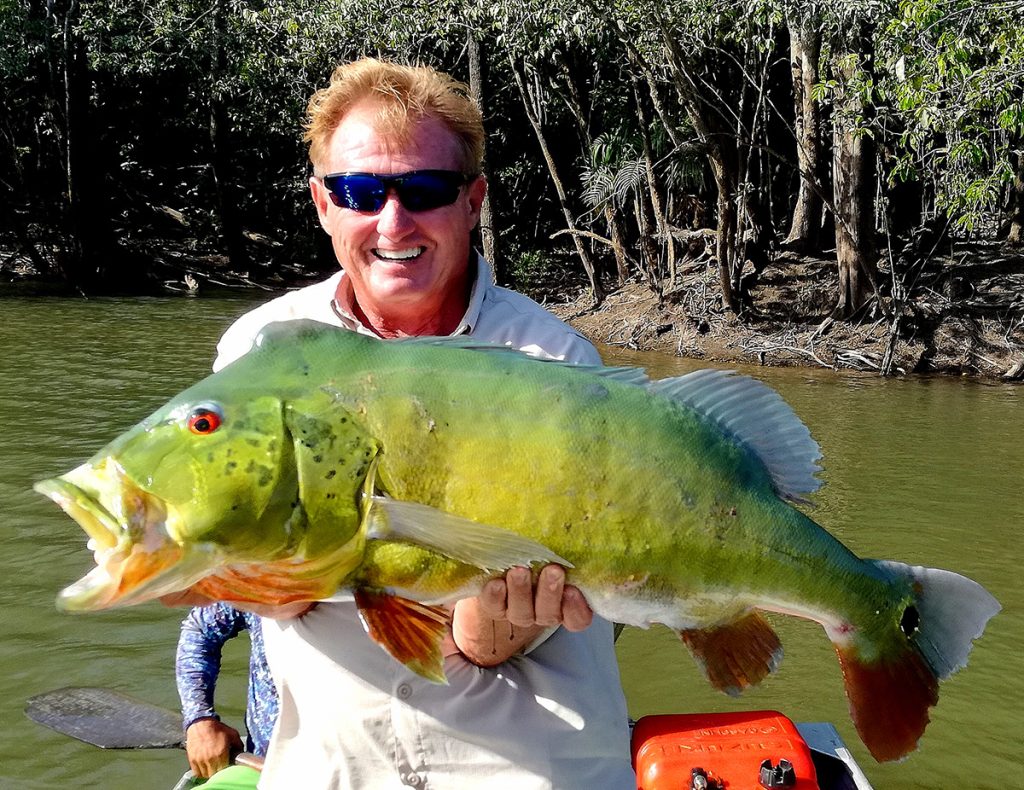
For the Peacock Bass fishing, Steve rates two of the tributaries in particular that flow into the Orinoco as “the best Temensis – three barred Peacock fishing” he has ever experienced in his fishing career. The size of the fish in these rivers and lagoons averaged 12lb to 16 lbs, with Steves’s largest peacock bass landed from these systems weighing a whopping 24.5lbs – that’s only 5lbs off the all-tackle world record!
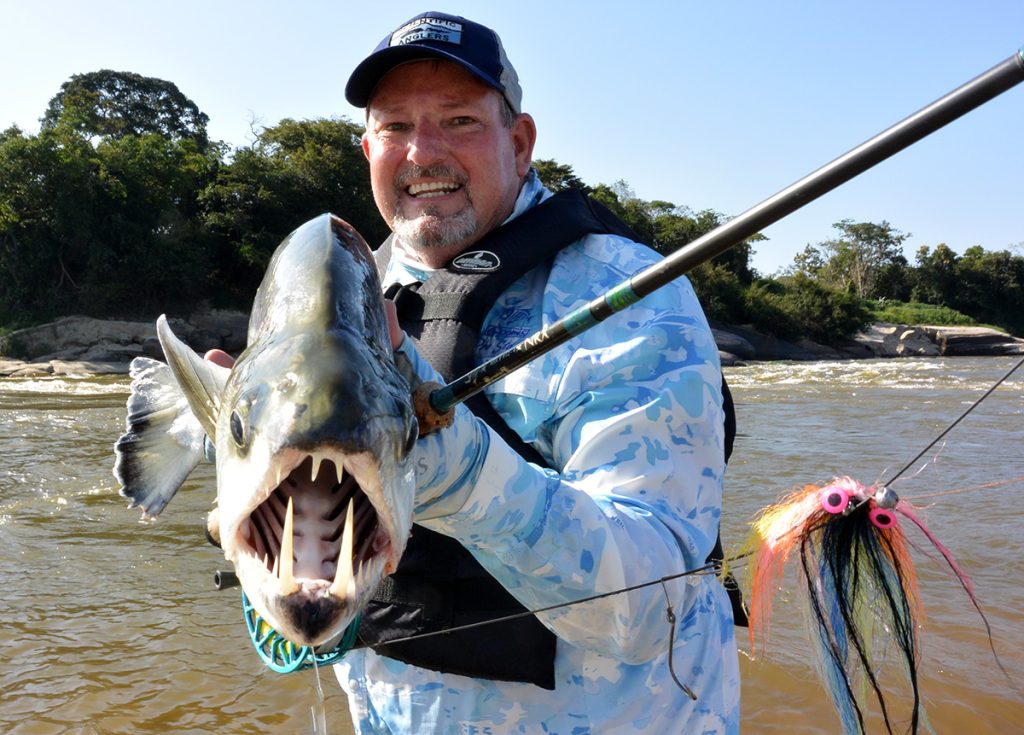
Payara (Hydrolycus scomberoides), or vampire fish as they are often called, due to those two prominent lower fangs that can range from 10 to 15cm in large specimens. These unwieldy teeth recede into cavities in the upper jaw, protruding through the top of the head on the larger specimens.
Payara are found throughout the waters of northern South America—specifically the Rio Orinoco drainage and the vast, winding rivers of the Guyanas. The all-tackle IGFA World Record for a Payara currently sits at 17.80 kg (39 lb 4 oz) and was caught at the Uraima Falls in Venezuela back on the 10th of February in 1996. There have been Payara to 36lbs landed on the Orinoco River in the region we fished – so the potential for records to be broken in the areas we fished also exists.
Fish Colombia is owned and operated by Beto Mejia – who has spent most of his life living and fishing across Colombia. Fish Colombia was the natural evolution of his passion for the outdoors and a burning desire to explore the unexplored. Beto quickly realized that through this exploration, he could also create sustainable community projects that could positively impact conservation and protect what is truly an amazingly diverse region.
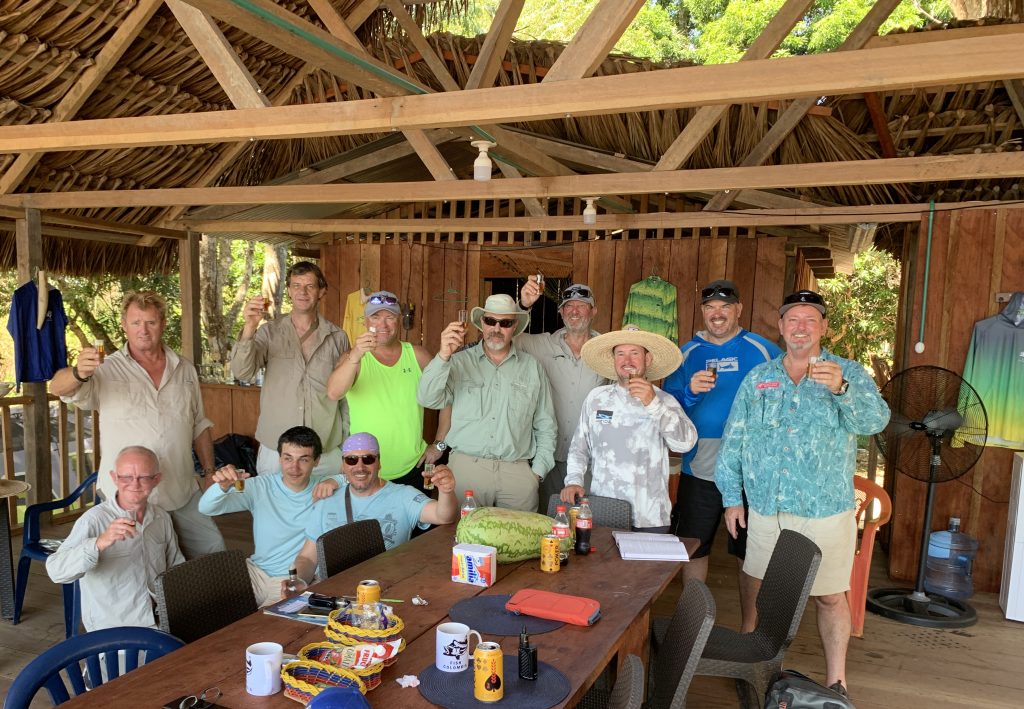
Our group was hosted by Steve Townson and consisted of some local mates, Matt Armistead, Alex Hickson and Aaron Muldoon. Then we had Richard Clarke, Duncan Hall and Chris Turner from the UK and Chad Winder, John Vagatalis and his son Demetre from Canada completing our mob. We also had professional photographer, videographer and fishing guide Wesley White join us, as you can see by the accompanying images.
Our adventure started by taking one of the longest nonstop flights with Qantas from Sydney direct to Dallas Fort Worth, Texas; that’s an 8,578-mile flight that can take in excess of 17 hours. We then transferred to American Airlines for the five-and-a-half-hour flight down to Colombia’s capital of, Bogota.
I always like to plan for a lay day at the start of each big trip to allow everyone to wind down, as your workload is always high before going away, and it’s great to chill out for a day or two before starting your fishing. Twenty-four hours of continuous travel also takes its toll. We stayed at the Courtyard by Marriott Bogota Airport and enjoyed a couple of days sightseeing around Bogota while waiting for the rest of our group to arrive.
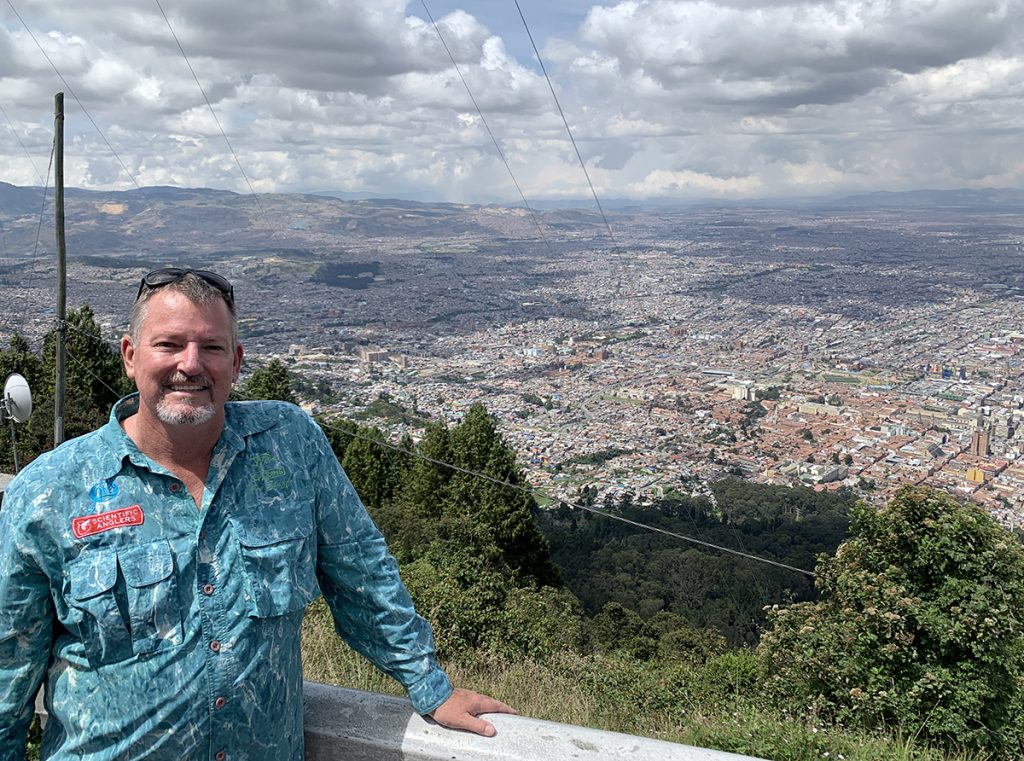
Bogota, which has a population of more than ten million, has a fascinating history and plenty of worthwhile sights to see, including the Gold Museum, Andrés Carne de Res restaurant, the Monserrate and Guadalupe Hill, the Salt Cathedral and just strolling the cobblestone bohemian streets of La Candelaria district, which is the historic centre of the city and includes some lovely street art as well.
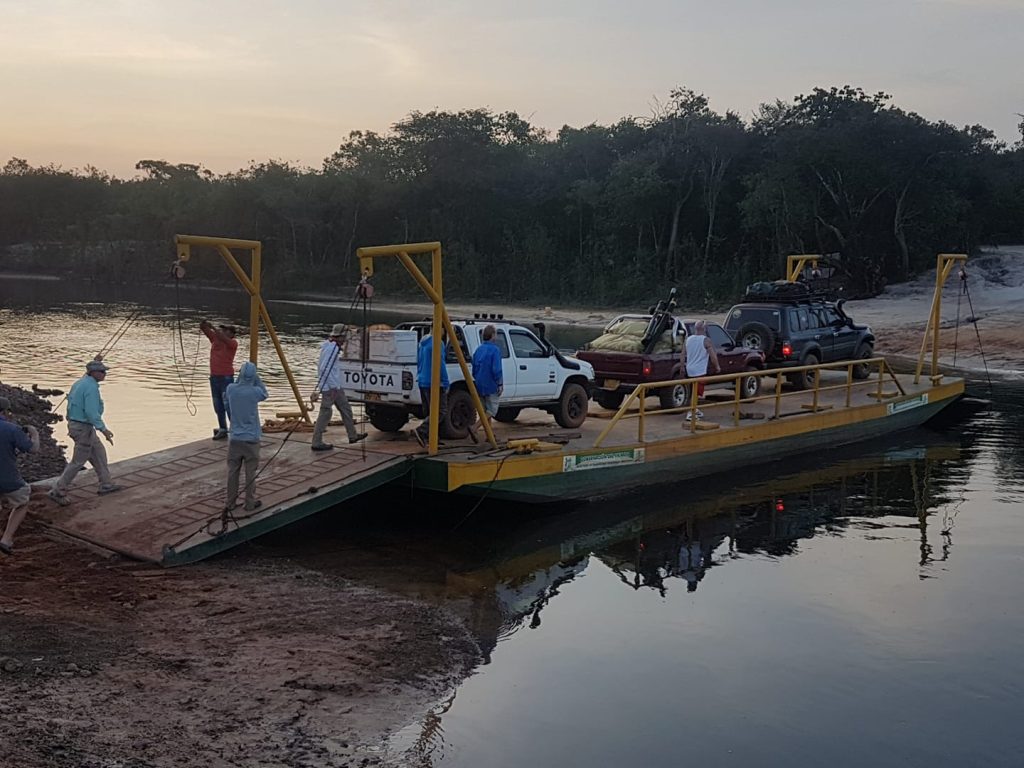
The next leg is a short hour-and-a-half flight from Bogota to Puerto Carreno, where we had a brief overnight stay before a pre-dawn departure embarking on a four-hour expedition by four-wheel drive to the banks of the Orinoco River. The scenery on the drive-in was another highlight in itself, with impressive landscapes from wide-open savanna plains to volcanic rocky mountain ranges and included two river barge crossings.
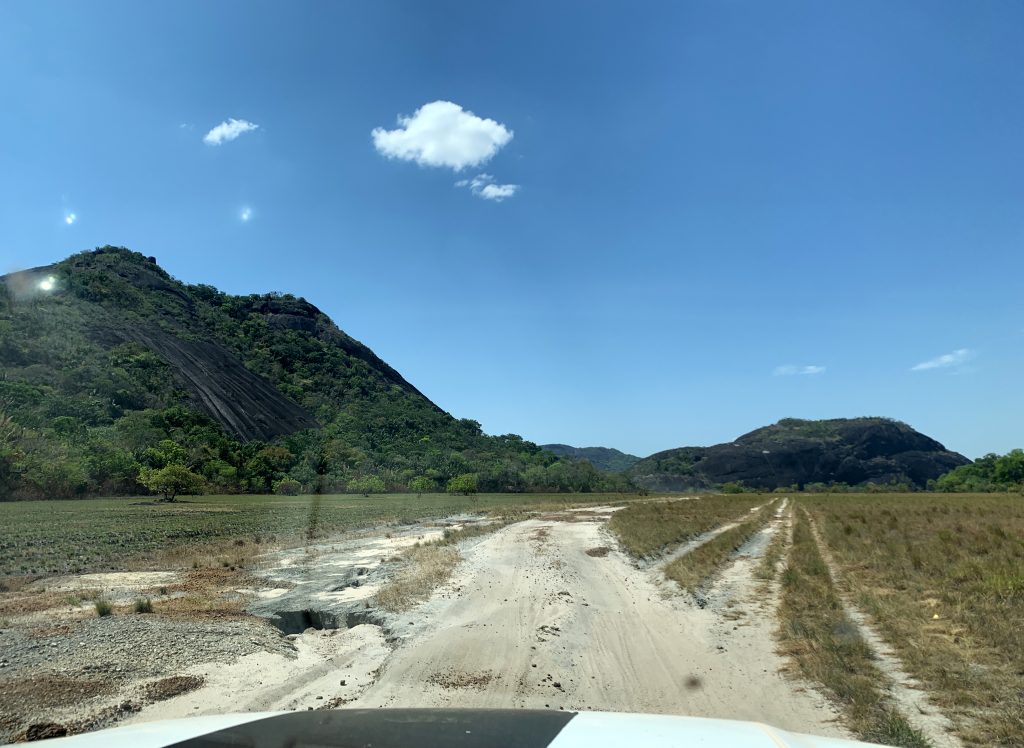
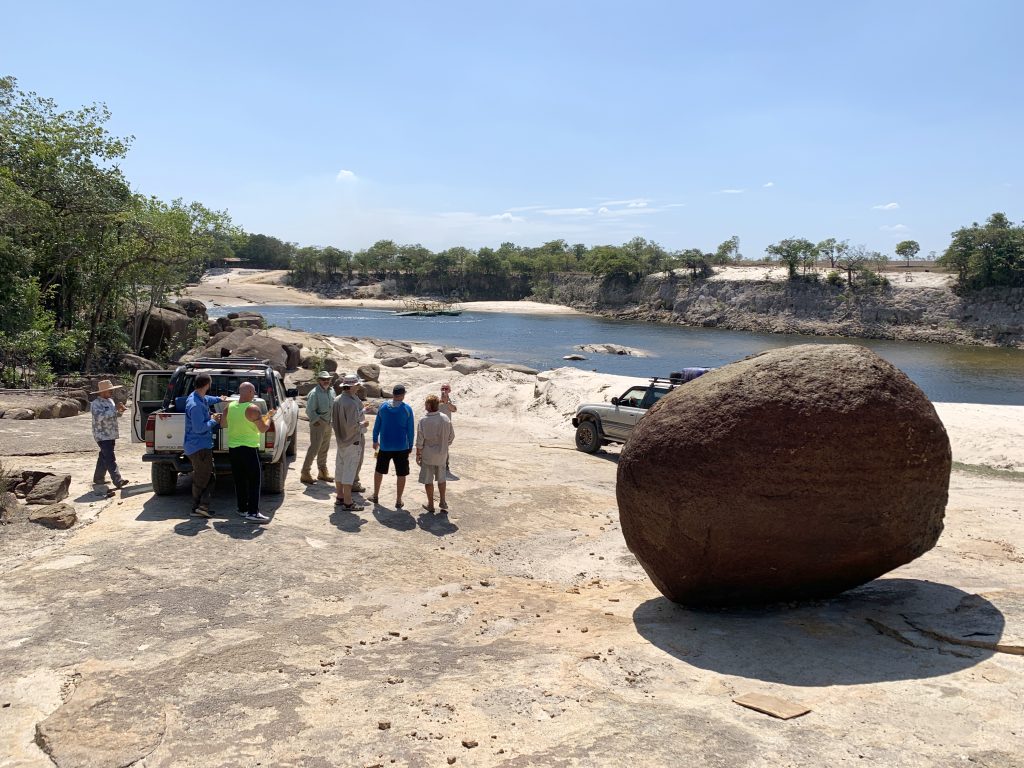
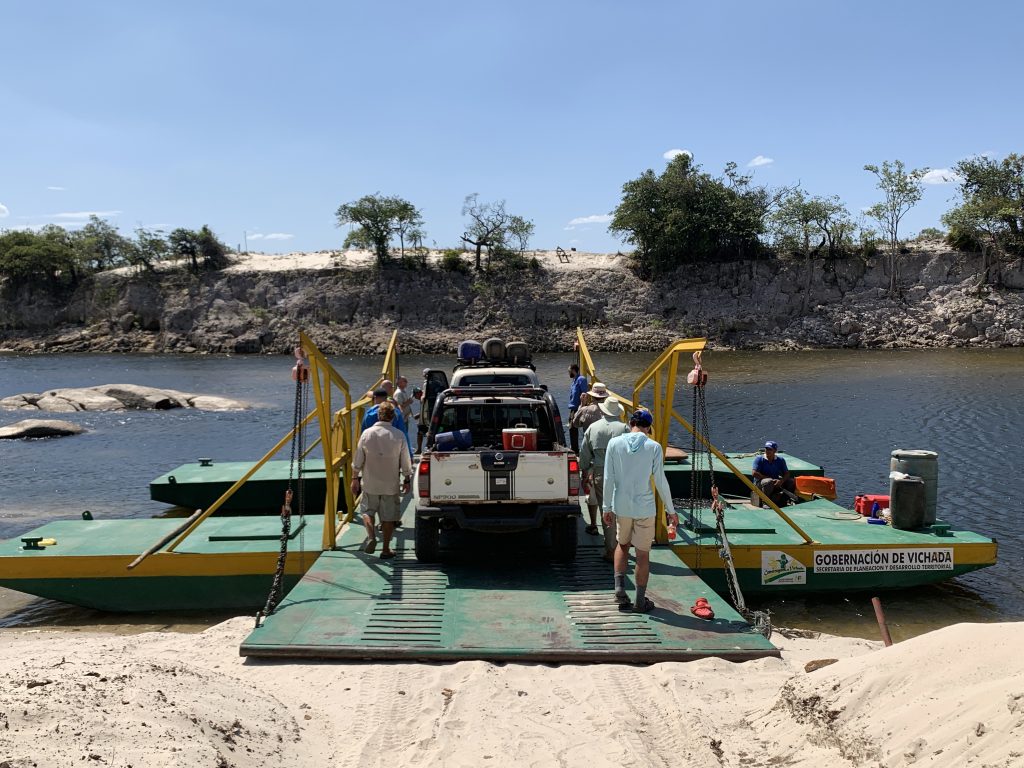
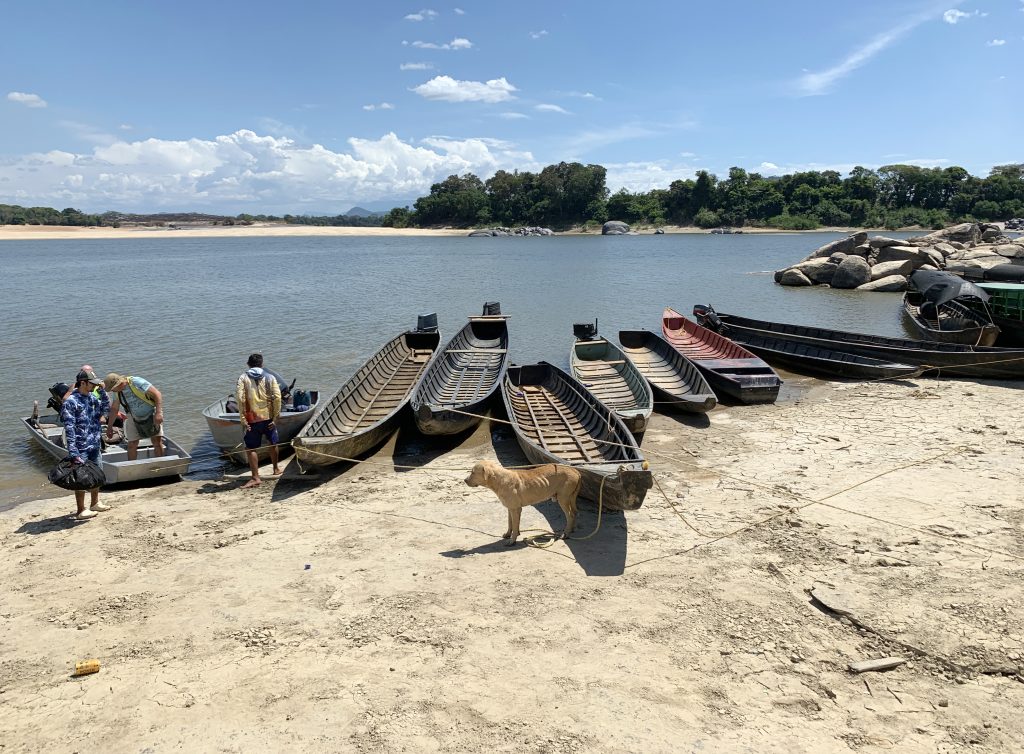
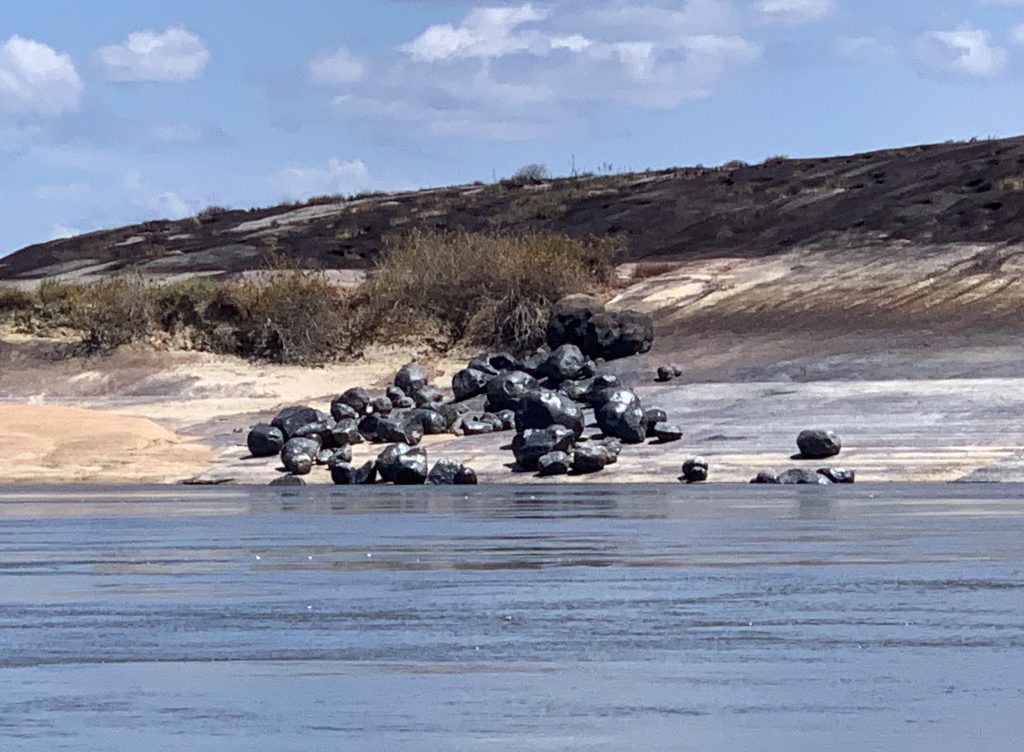
Once we reached the mighty Orinoco River, we boarded some local long boats for the hour run upriver to our first camp.
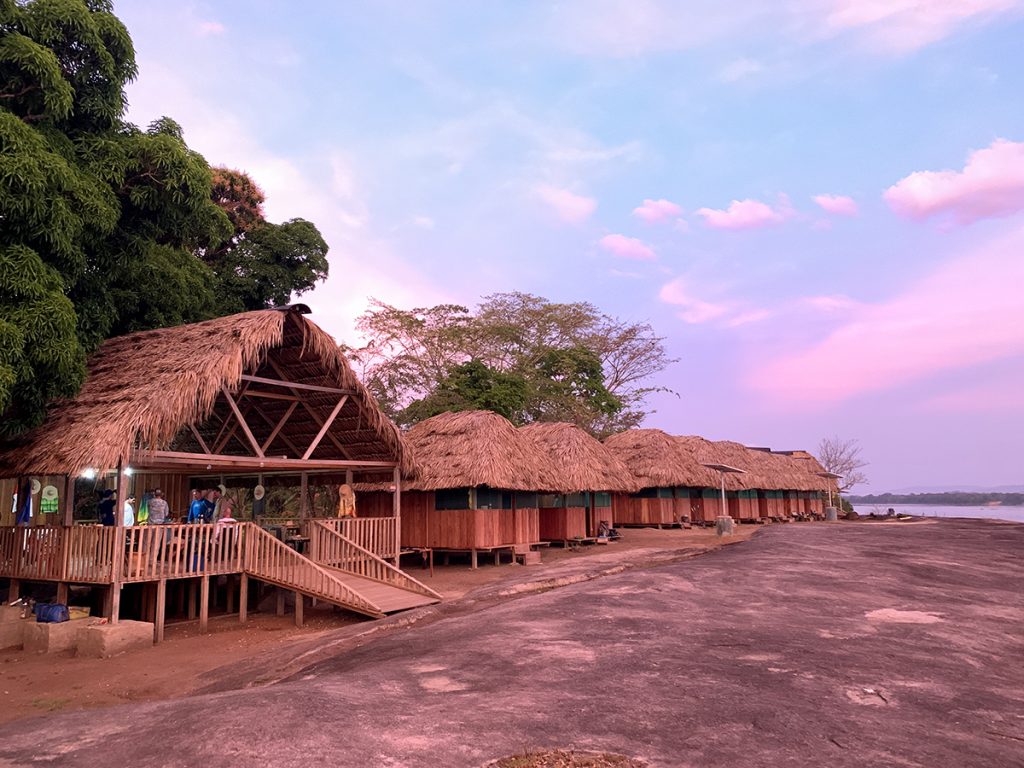
The final leg was a picturesque half-hour run by boat up the Orinoco River, forming part of the border separating Colombia and Venezuela. Fish Colombia’s new lodge has been built on a granite island to one side of the Orinoco River. It offers comfortable twin-share bungalows with their own showers, toilets and fans and a large common dining area overlooking the river. There is generated power so you can charge all your electronic gadgets and camera equipment, and you also have limited phone reception. Although disconnecting from the real world will only enhance your stay.
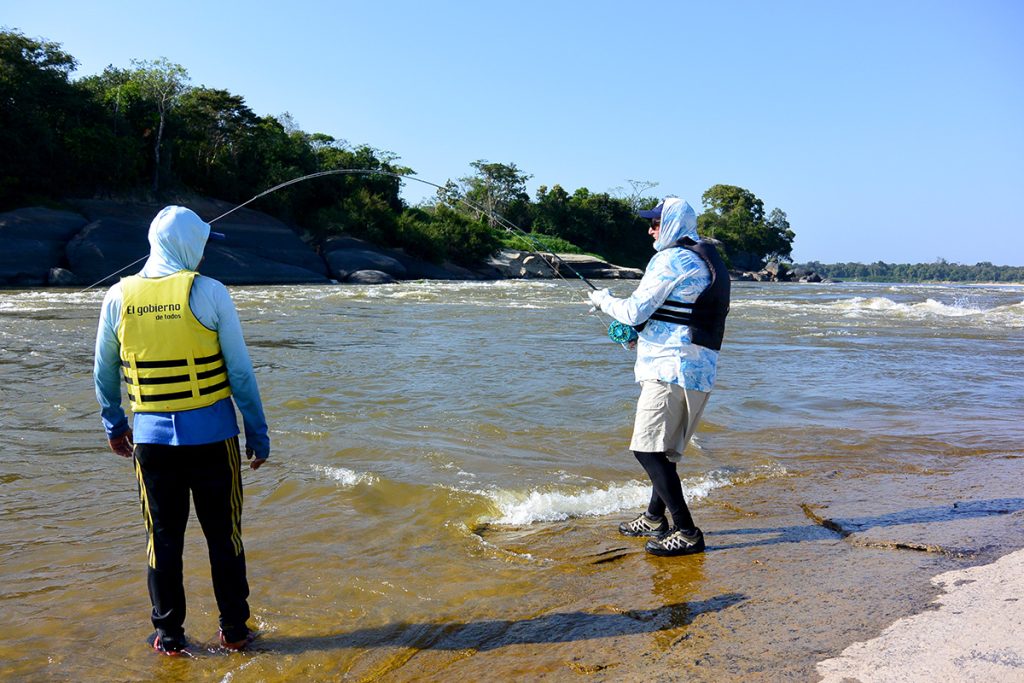
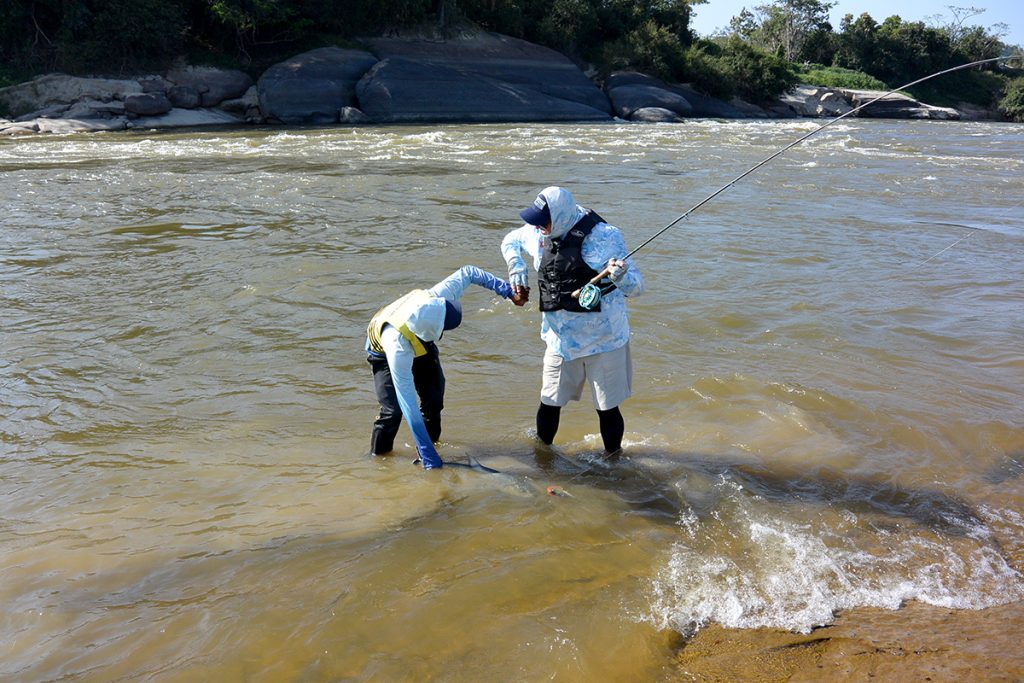
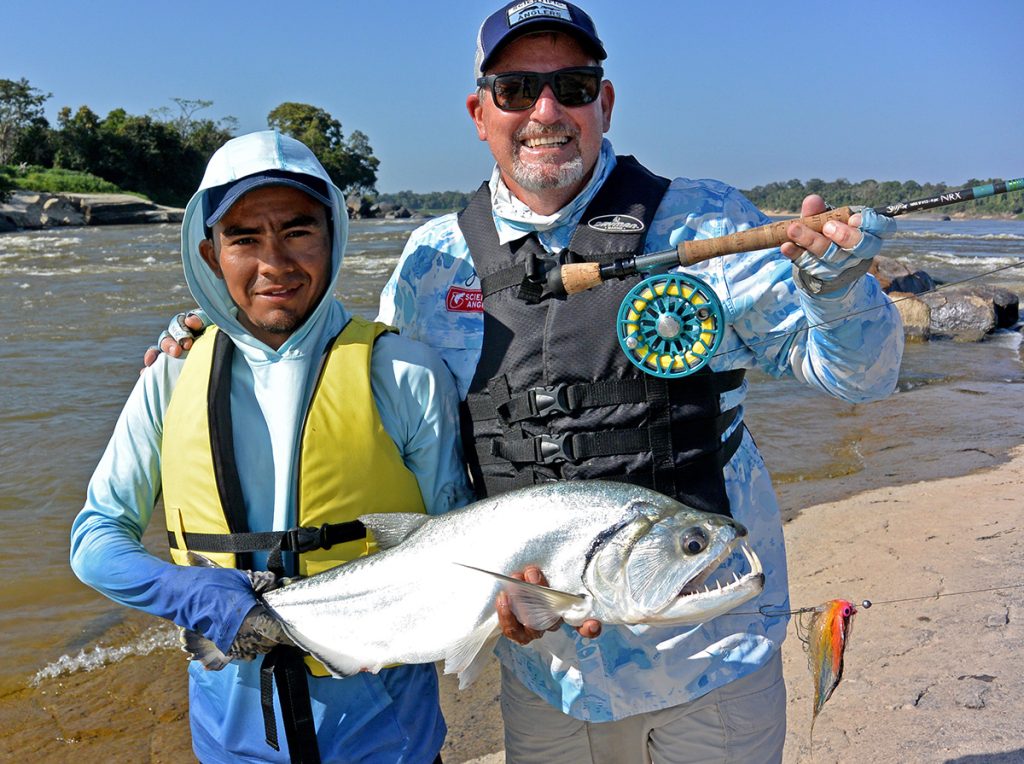
After a quick briefing session and breakfast, we rigged our gear for Payara, which we would target for the next couple of days. It is another half-hour run upriver from the lodge to a junction with three sets of large class IV rapids; this is a world-class payara country. Depending on the water levels, you can fish from your boat or the shore, which can vary significantly throughout the season. We had timed our trip for early February, which is one of the driest months of the year for this region with the fishing season generally runs from January to April, which coincides with the dry season; this is when the rivers drop, and the fish enter the main channels and lagoons. When you look at the huge granite boulders strewn along the river bank and precariously perched on the various rock islands, you can imagine how much water must come down this river during the wet season.
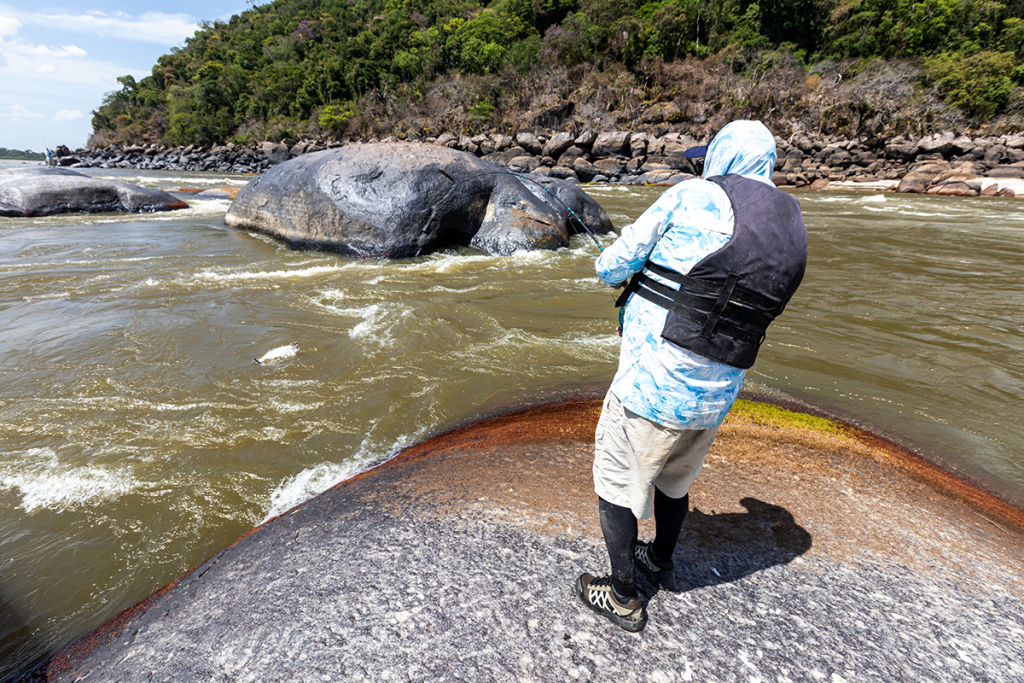
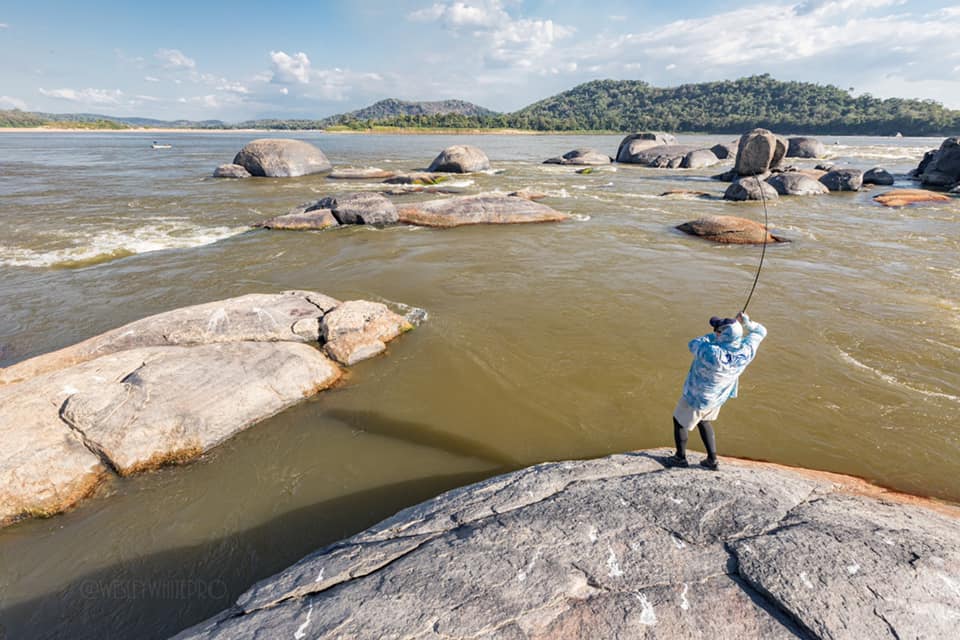
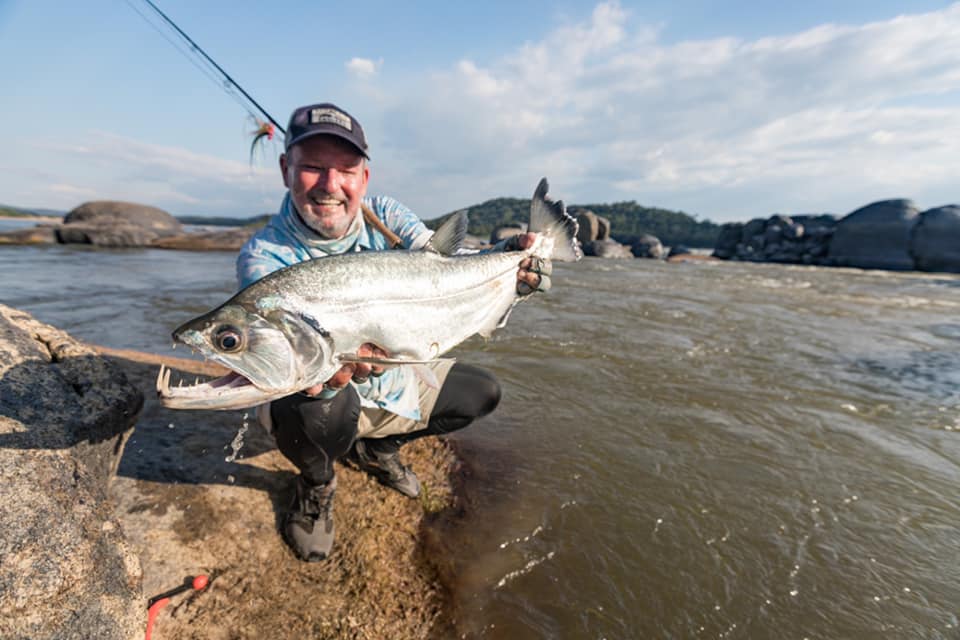
I fished fly the whole trip exclusively with two different weight outfits being required to cover payara and peacock bass as the water you fish is entirely different for each, and you will also need a few different fly lines. For Payara, bring at least a #10wht as you have to be able to cast 500-grain sinking lines all day. I used a G.Loomis Asquith 9ft #12, wht matched with an Abel SDS-12 reel and Scientific Angler fly lines in the Sonar Titan big water max sink range in both 500 and 600 grains.
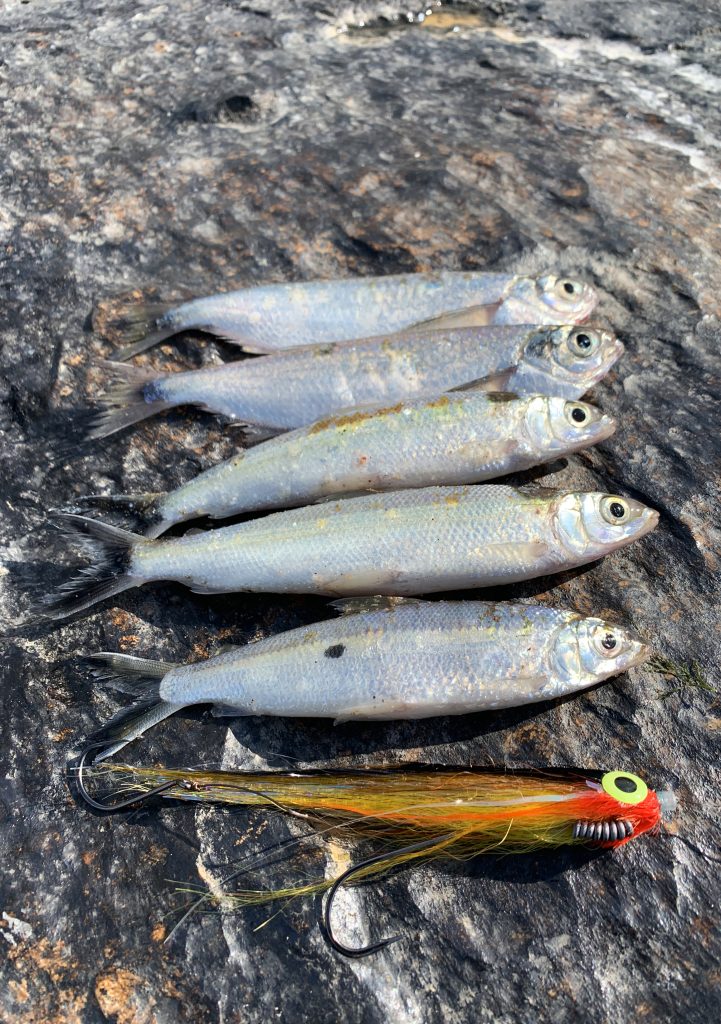
Leaders are pretty basic, with a straight metre and a-half section of 50lb fluorocarbon nail knotted to your fly line being my preference, although you could use loops – I just find they don’t turn over as nice. Because Payara has those wicked teeth and fangs, you also need a wire bite tippet. I used RIO Powerflex wire bite tippet in 40lb, which is really pliable and easily knotable. My payara flies were tied by local Colombia tier Armando Giraldo who owns and operates Orinoco Flies. Large 5-6 inch flashy profile tube flies got the most bites with a second stinger hook assisting in staying connected. I also ran a small ball sinker on my leader in front of the fly to assist in keeping it down in the boiling water. The best colours were pink, blue, black, and gold, with plenty of flash.
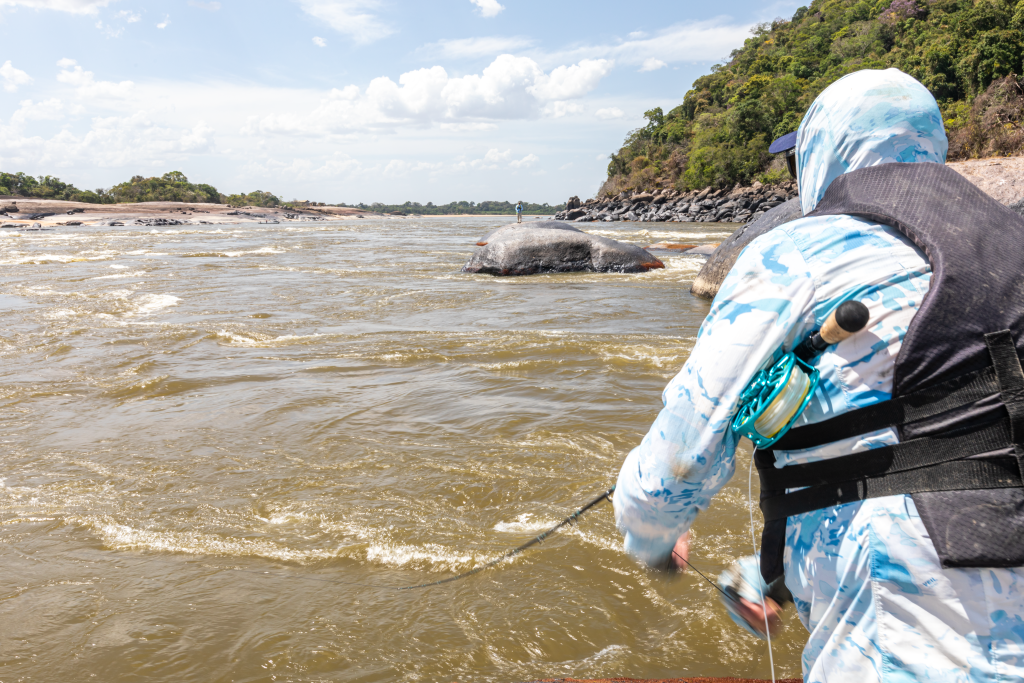
The technique was to cast your fly into the head of a rapid, feed out extra line, and mend where possible to get your fly down as deep as possible before commencing a fast continuous strip retrieve. I mostly put the rod under one arm and used both hands to retrieve as quickly as possible as I do for tuna; this style also stops you from trout striking. The payara bite is rock solid and often followed by the fish leaping into the air before using its deep flanks in the raging current to head downstream. Payara are more than just another exotic species to tick off. They are great sportfish and will often rip a 100 metres or more backing from your reel on the first run between wild leaps.
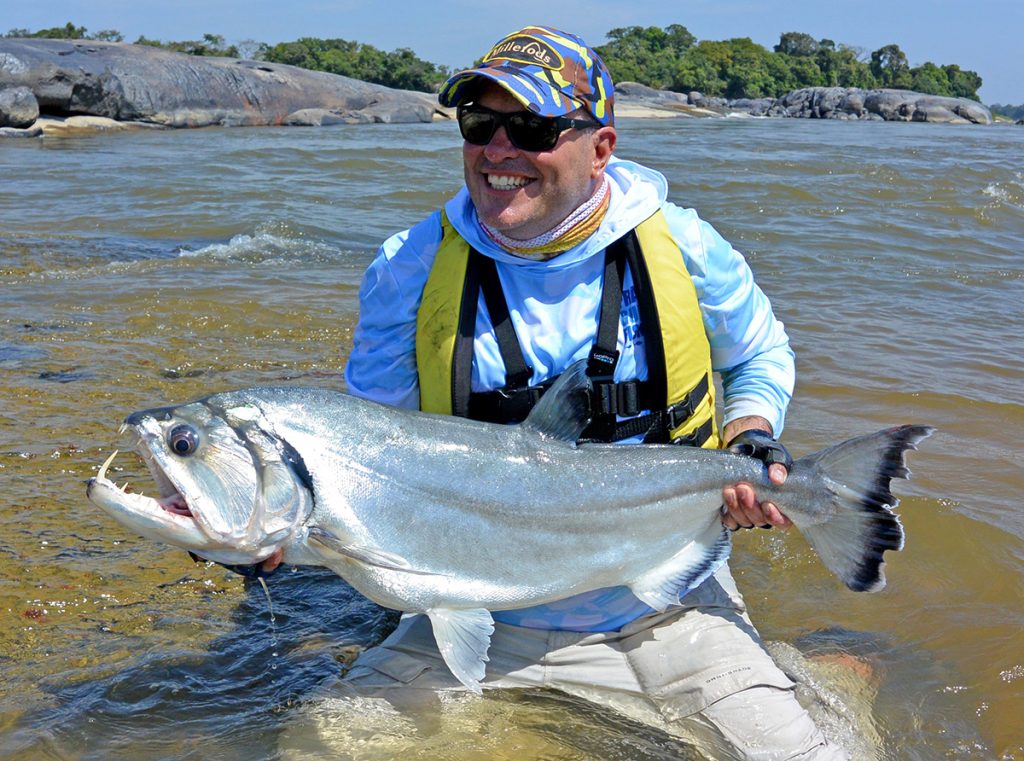
My mate Matt Armistead did well fishing conventional tackle with a quality 7ft spin combo spooled with 20-30lb braid and 50lb fluorocarbon leader plus a short section of knotable wire tied to a Mustad Fastach Snap connected to the lure. Matt’s preferred combo was a Shimano Coltsniper with Alvey Orbiter 200. The most successful Payara lures were Rapala Magnum Countdowns in CD14 and 18 sizes, with the fire tiger and redhead getting the most eats. Matt landed our group’s largest Payara, a beast in excess 20lbs on a custom-painted CD 18 from Peter Standing at Honey Hole lures.
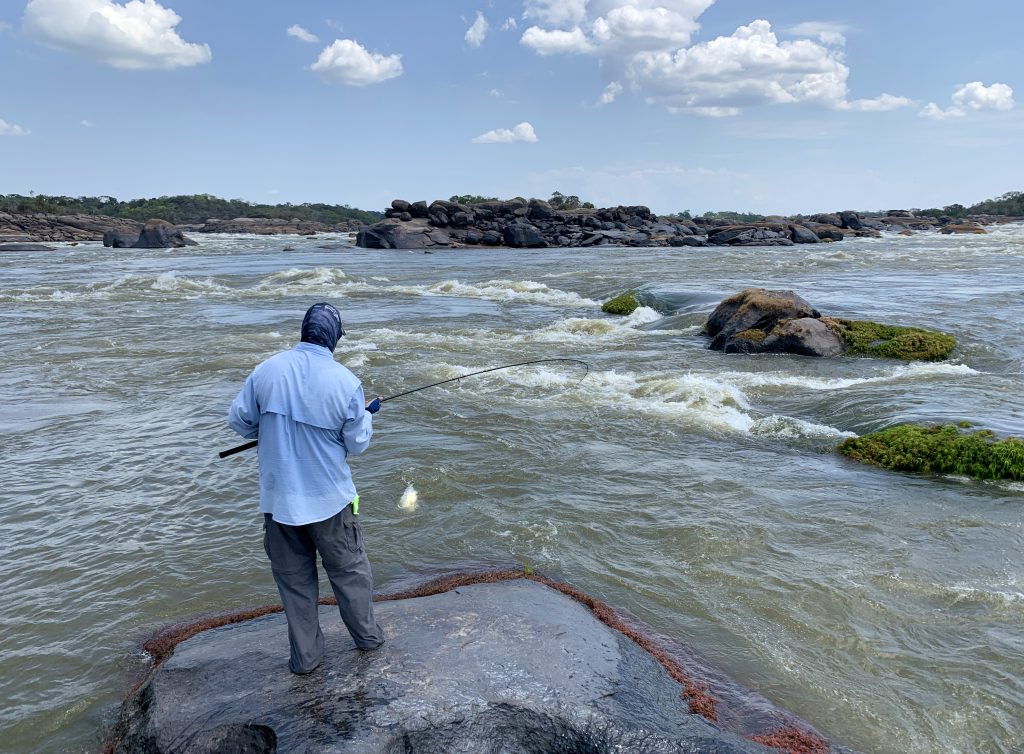
The technique with the lures was similar to the fly – cast upstream into the head of the rapids and crank the lure down hard to depth, then a slow rollback through the fastest running seams.
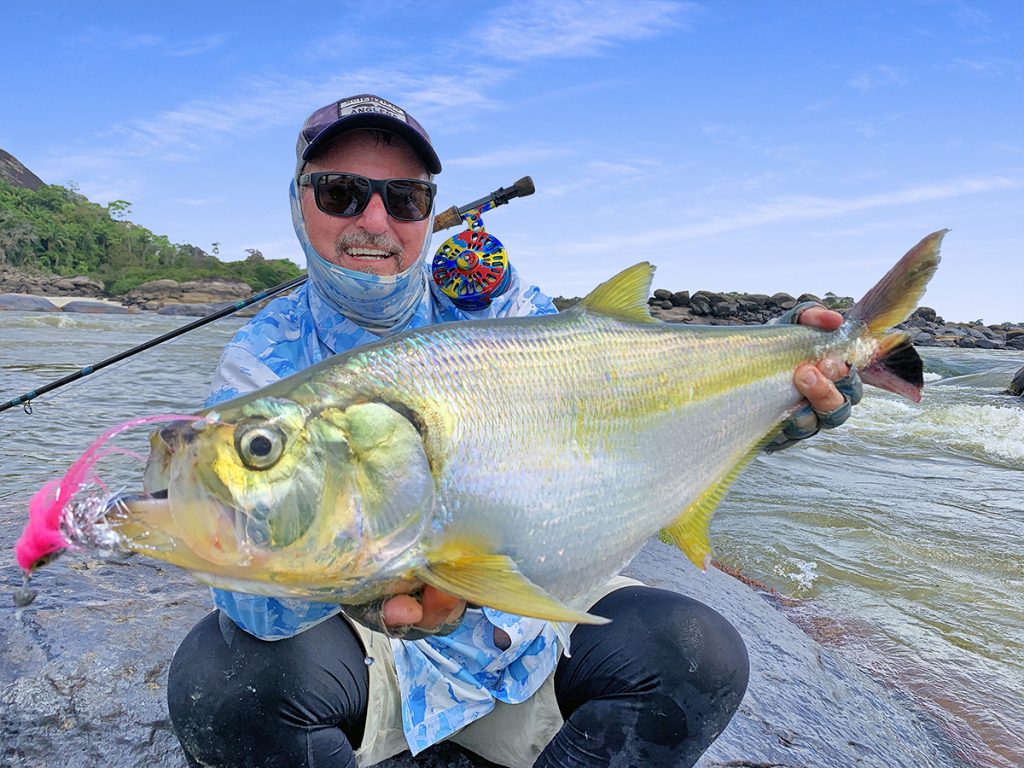
They are an excellent, yet little-known migratory gamefish that strike aggressively with a very similar appearance and fight to a miniature tarpon. They averaged 4 to 10 pounds on the Orinoco, but I saw pictures of fish in excess of 15lb, which have been caught in the area we fished.
Sardinata sport a brilliant golden holographic colouration – which is why some now refer to them as “Golden Tarpon”. They will take both flies and lures with reckless abandon, particularly like surface presentations – however, staying connected to them is challenging!
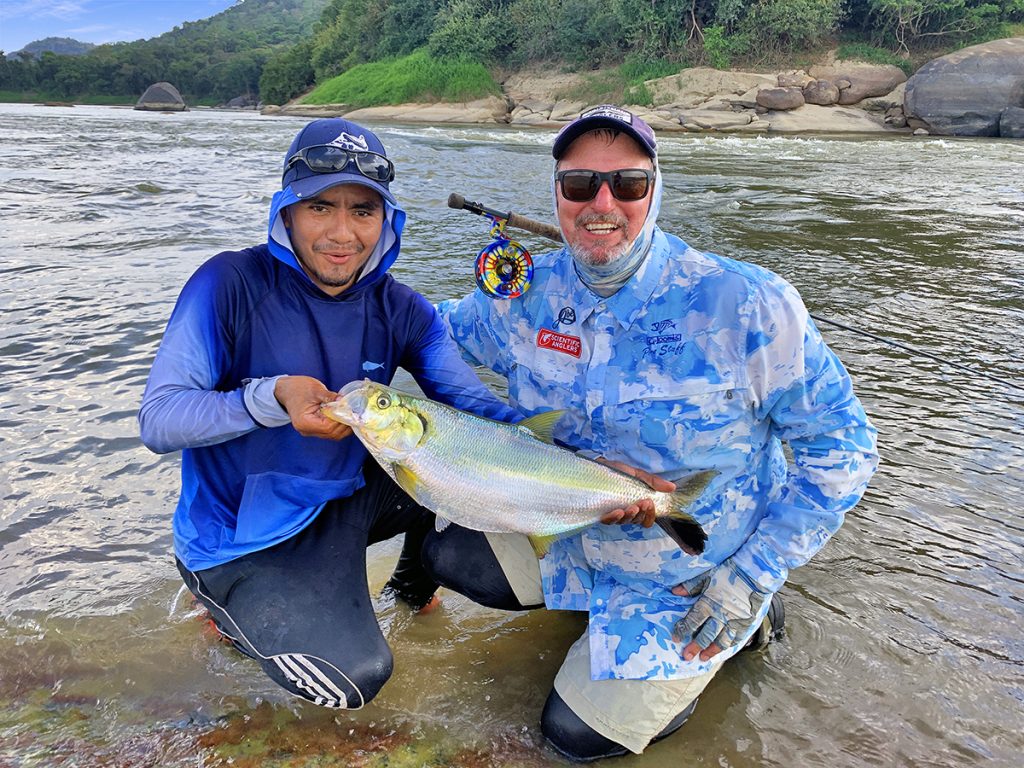
We would often see Sardinata busting up in the rapids and open water below them like tuna. While watching them attack a surface lure or popping fly is exciting, the hookup rate is not as consistent as it is with sub-surface presentations. I did well with Clouser Minnow and small baitfish pattern flies fished on a Scientific Anglers Sonar Titan Jungle Clear tip in a 9wht with a straight-through 50lb fluorocarbon leader. As they are almost pelagic in their feeding style, a quick strip retrieve was best – even double overhand when you could see them busting up on the surface like tuna!
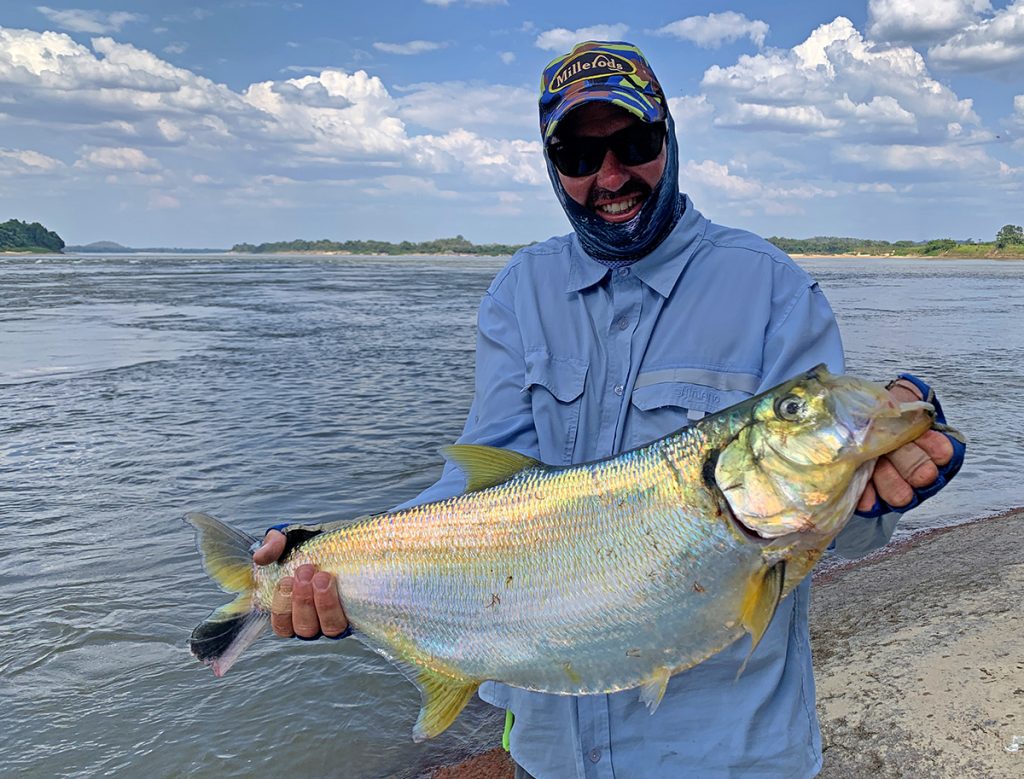
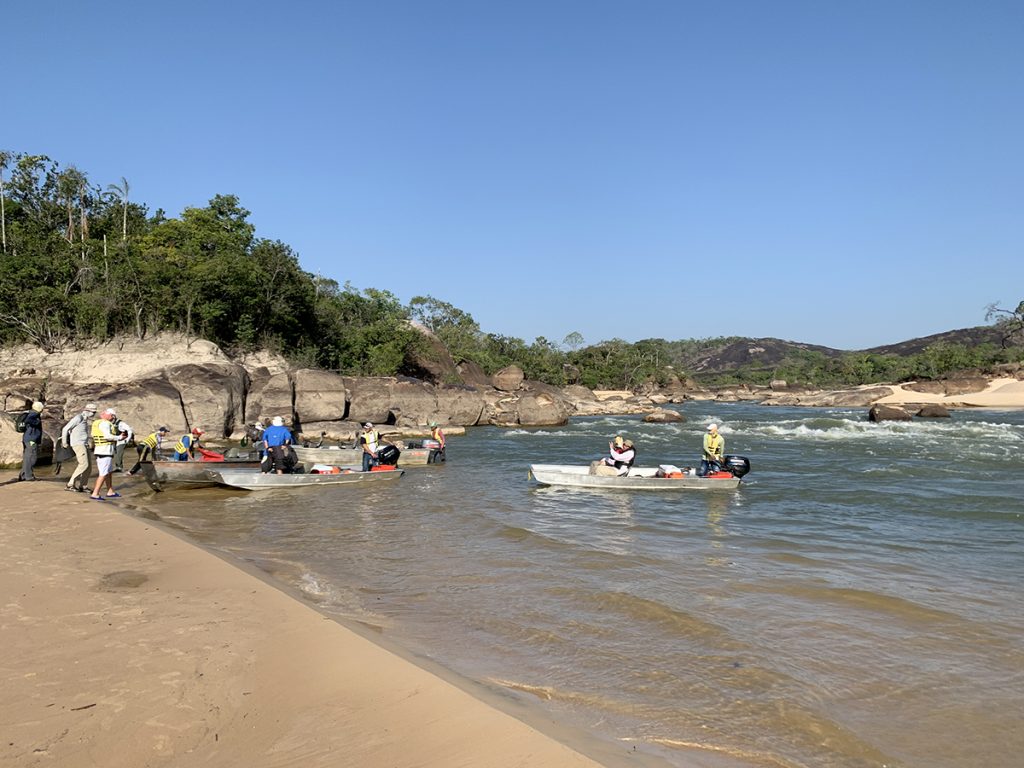
After two days of Payara fishing, we shifted camp up into one of the nearby tributaries of the Orinoco River to start the peacock bass fishing leg of our adventure. It was a 3-hour run up a beautiful clear river with lush rainforest and sandbars studding the banks with one set of rapids needing to be traversed on foot by our group while the guides drove the boats through 40 meters of dangerous but beautiful rapids.
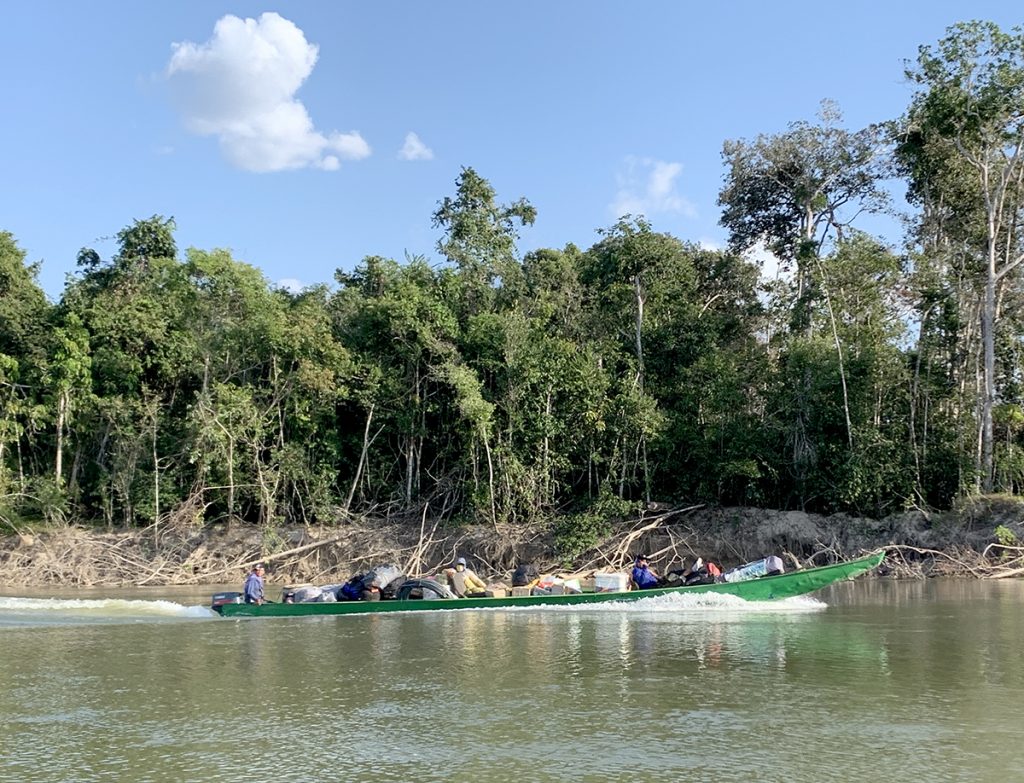
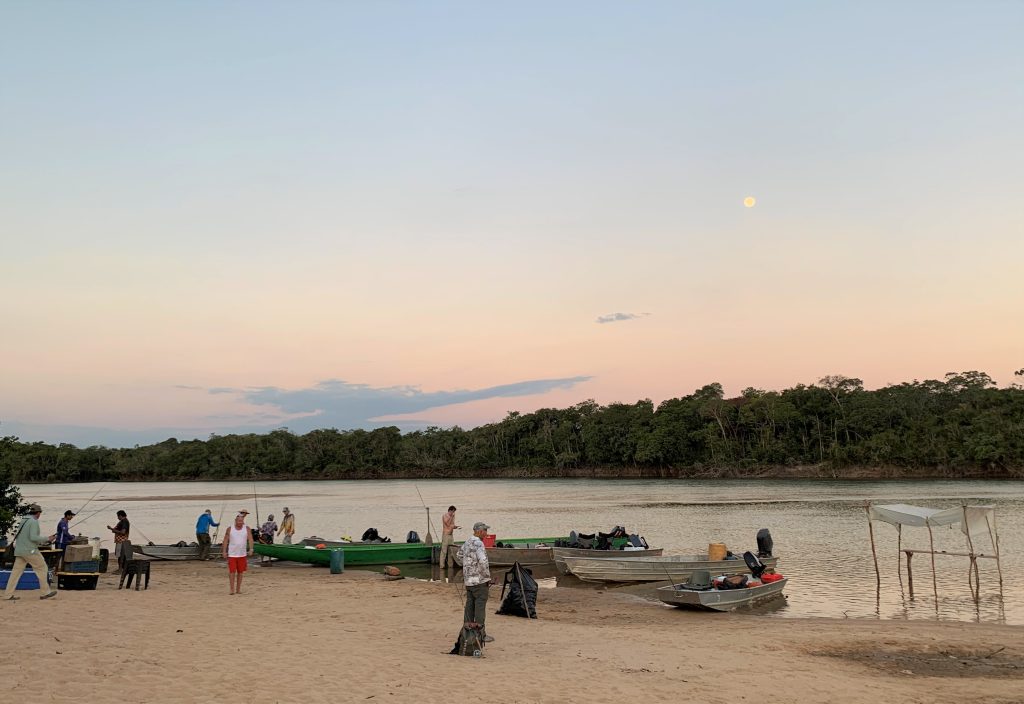
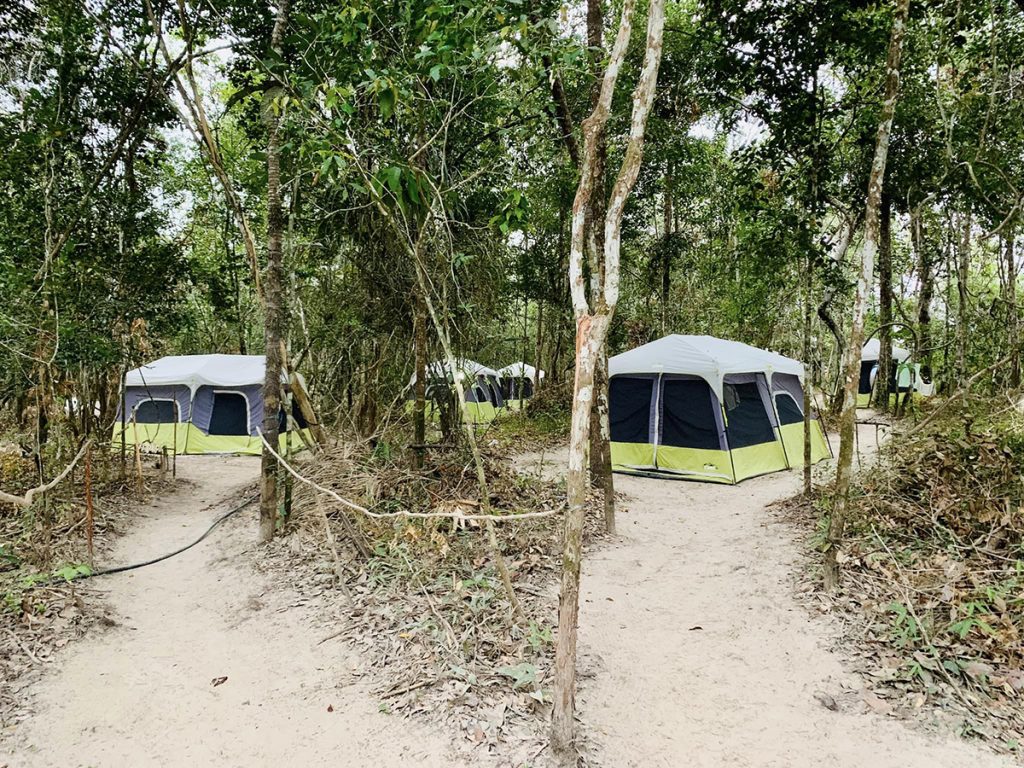
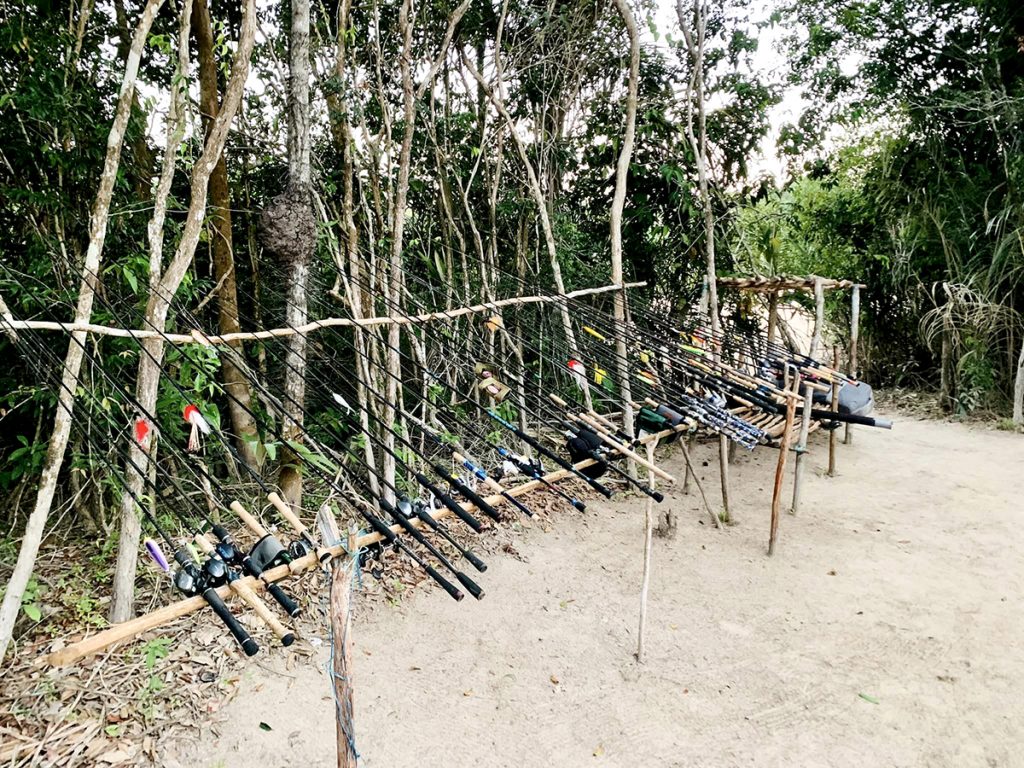
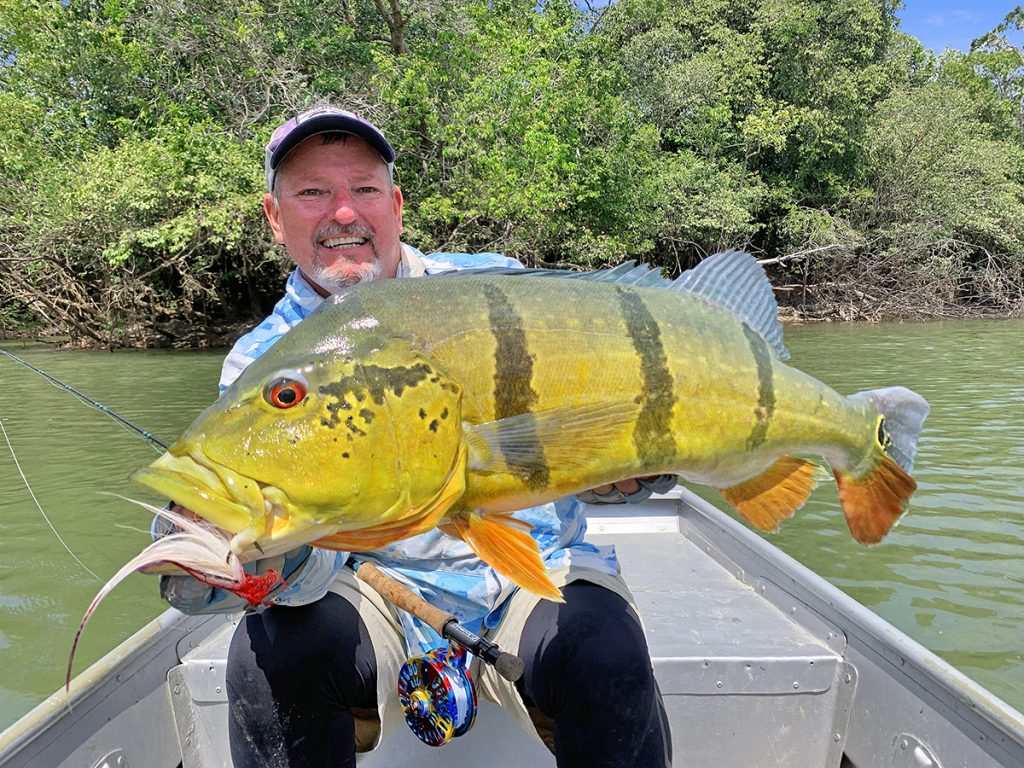
There were approximately ten lagoons that could be accessed from our base camp within an hours run either up or downstream. The lagoons varied greatly from relatively small and shallow to large deep, and snaggy jungles. One of the biggest surprises for me was that peacock bass are not structure-oriented and could be found practically anywhere. While we caught them off snags, all of our largest fish came from the centres of the lagoons with no structure at all. This may be due to water temperature as we experienced the hottest conditions I have fished to date, with most days reaching 40 degrees Celcius. We did occasionally see peacocks busting up on baitfish with a quick cast in that direction, always resulting in a robust strike.
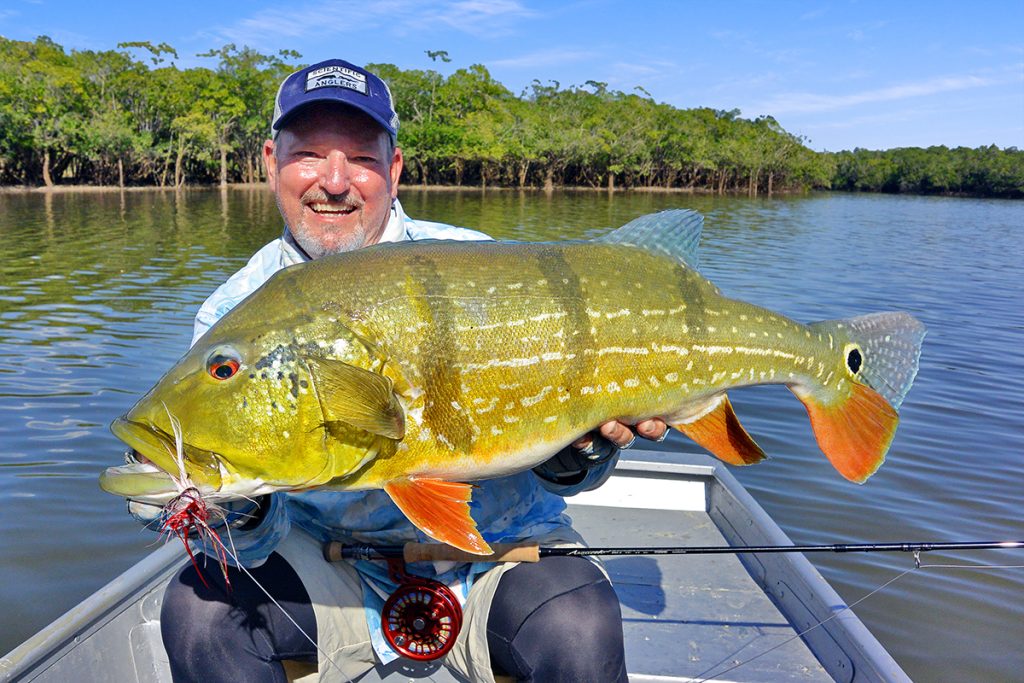
I fished two fly outfits for the peacocks, both G.loomis NRX and Asquith 9ft #9wht fly rods matched with Abel Super series 9/10 reels, spooled with Scientific Anglers ( SA ) XTS backing. I loaded one with a Scientific Angler Sonar Jungle Custom Tip fly line. These are the best fasting sinking tropical lines I have cast to date and handled the extreme heat without tangling and allow you to customize the sink rate by cutting the head sections to suit. I cut mine back to approx. 300 grains, which loads a 9 wht rod perfectly and, with the intermediate running line, gets your flies down deep and fast.
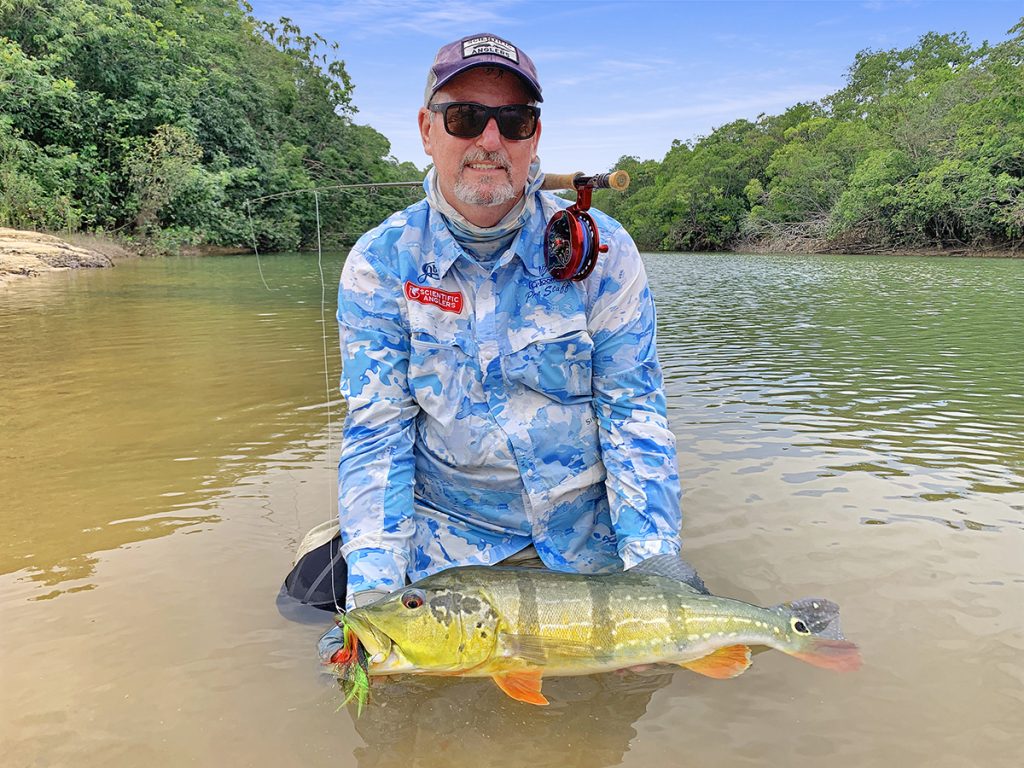
The second outfit I fished with was a Scientific Angler Sonar Titan Jungle Clear Tip which has a transparent 15ft intermediate sinking tip on a floating shooting head and running line. This was ideal for the shallower lagoons and fishing surface flies. Unfortunately, we did not experience any real surface action with all my peacocks eating flash tail whistlers or Clouser-style flies tied on bend-back jig hooks by Chris Adams or Ammos Flies.
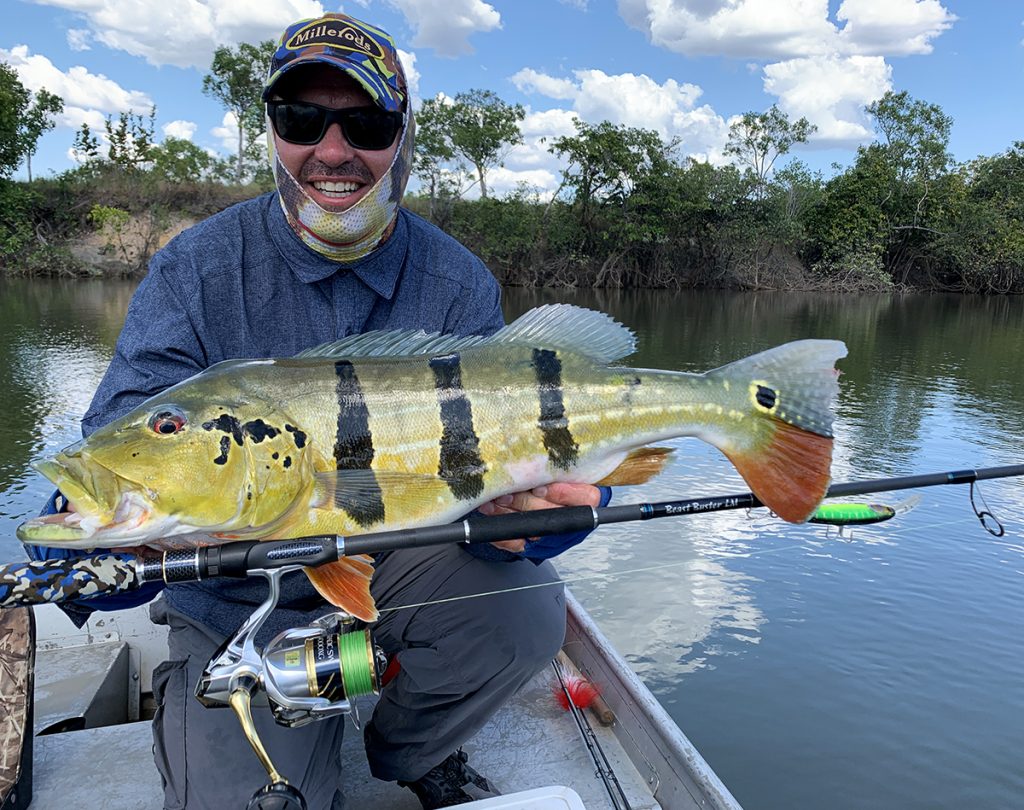
Matt fished a couple of Millerods both in the Beastbuster LM matched with a Shimano Stradic 4000 loaded with 40lb Kairki braid and a SwitchFreak paired with Shimano Conquest 300 loaded with 50lb Kairki braid. Matt also ran a rod length of 50lb Ocea Fluorocarbon leader to the lures.
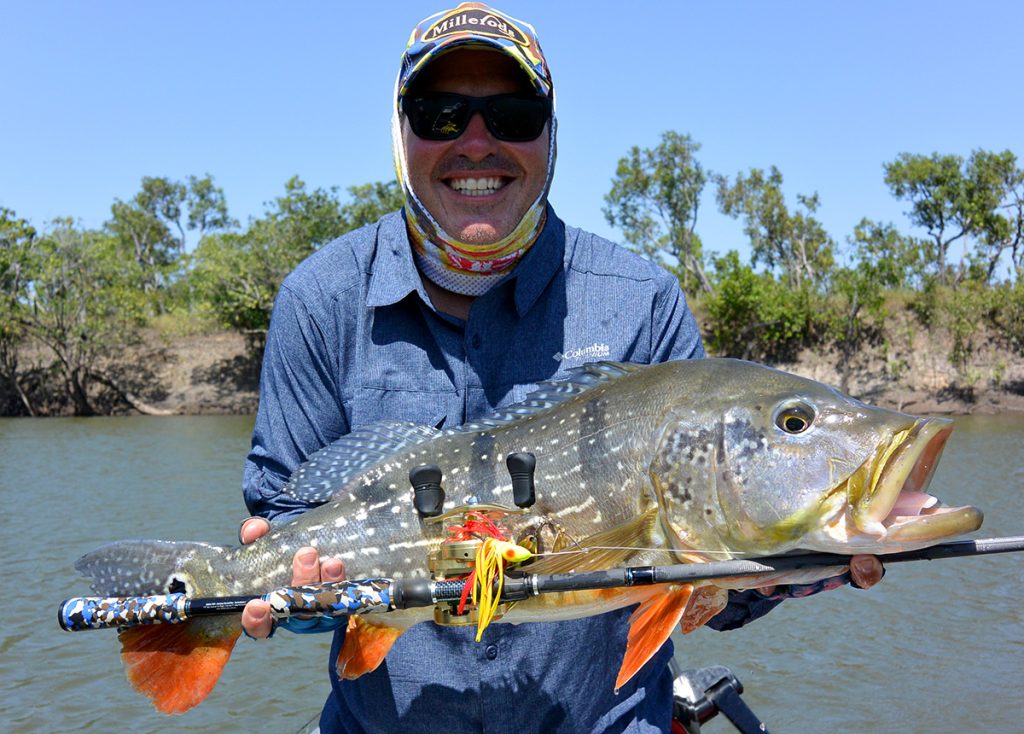
The most productive lures for the peacocks included 1oz Bassman spinnerbaits with small Colorado and large willow blades, Steve Townson’s bucktail stinger jigs and Jackall DD Smash Minnows in yellow/red and fire tiger patterns
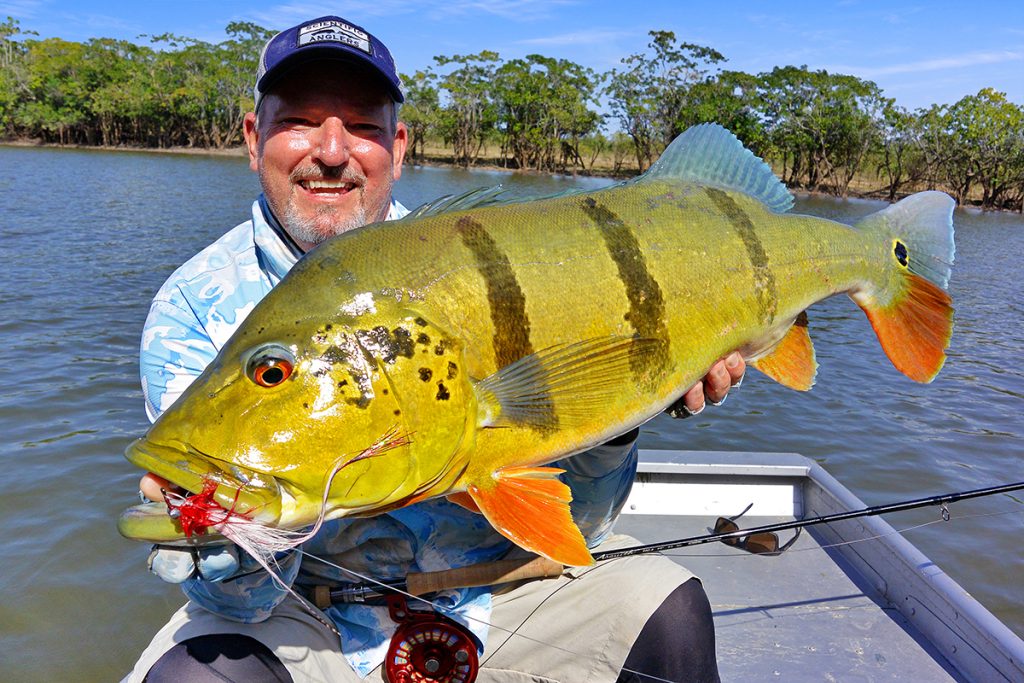
Peacock bass are the most stunning and beautifully coloured freshwater fish I have been fortunate to hold. Many people believe the Speckled ‘Paca’ and the Giant Three-Barred’ AÇU’ to be two completely different species. But they have, in fact, been proven by DNA testing to be the same species, just encountered at different stages of their breeding or spawning cycle.
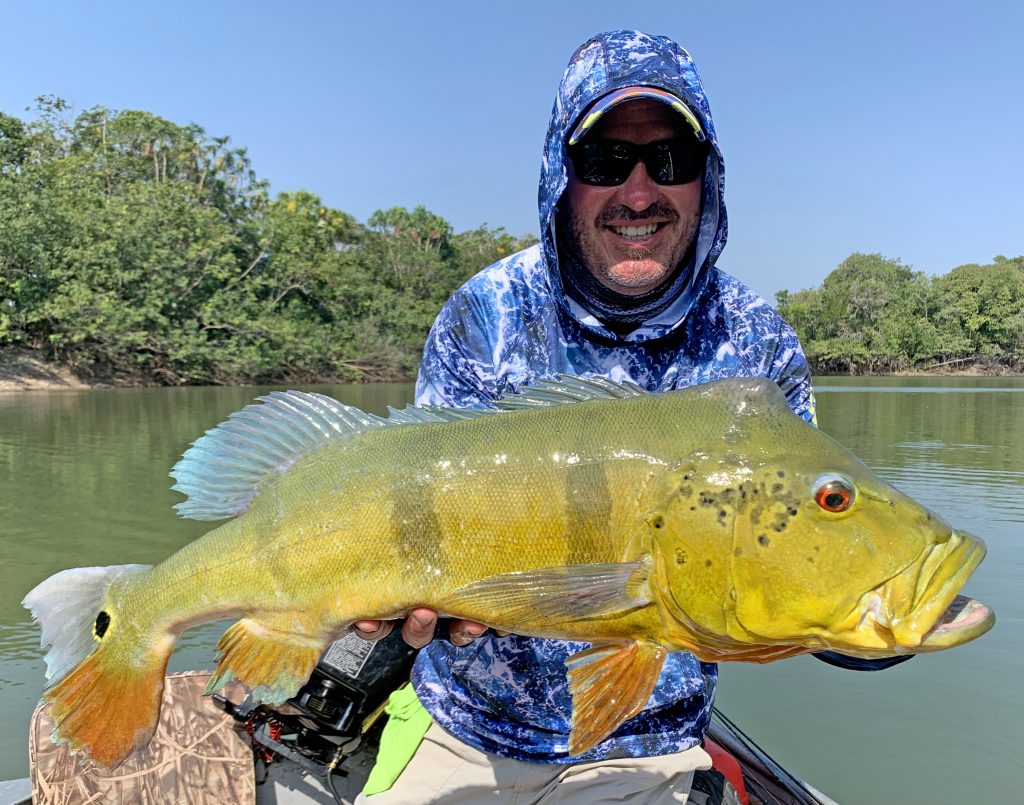
Everyone in our group landed peacock bass to 15lbs with quite a few above that mark which shows that this truly is a trophy fishery. I landed two peacocks that measured out at 20 lbs, and Steve Townson landed the largest one for the region so far at an amazing 24.5lb weighed on a Boga Grip!
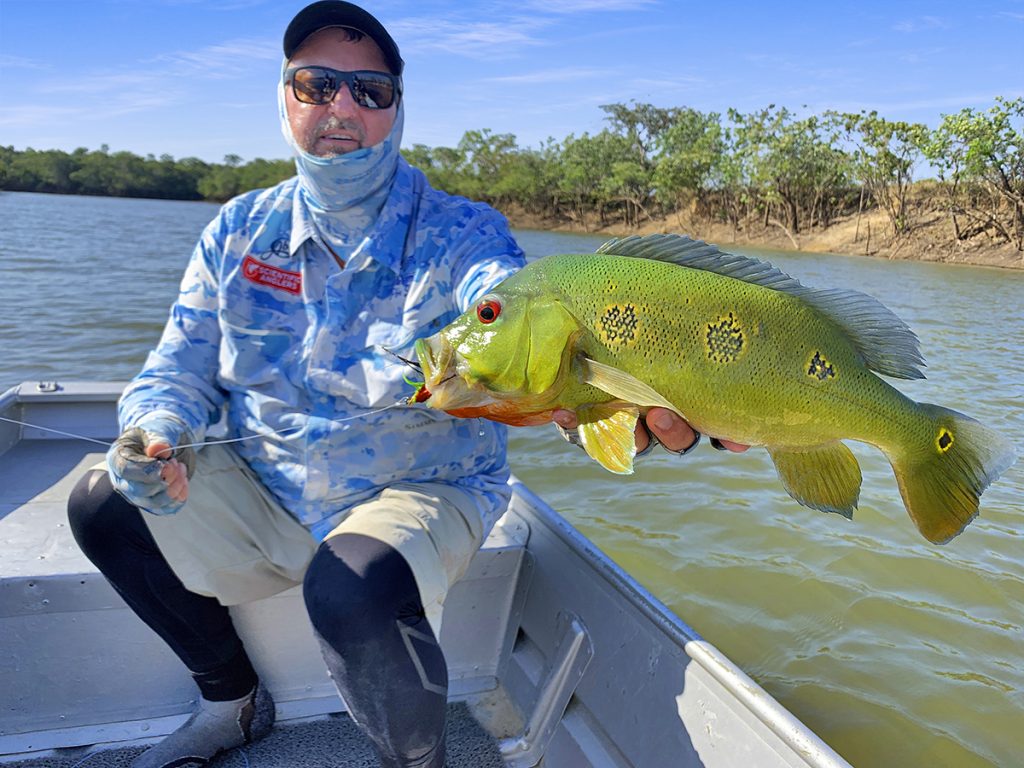
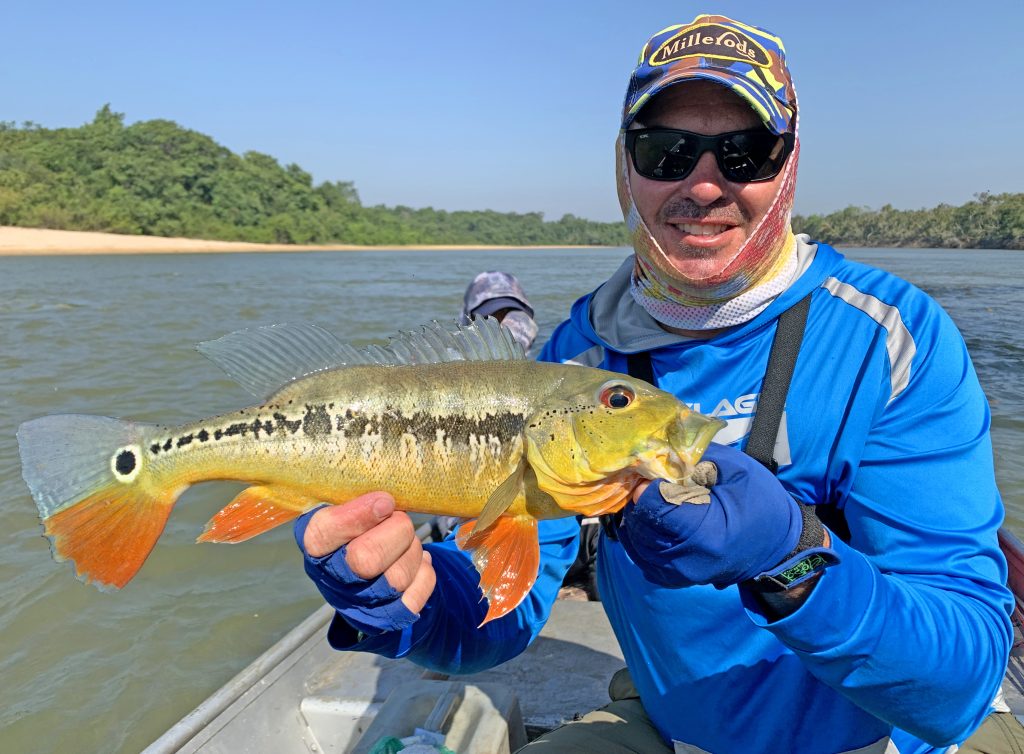
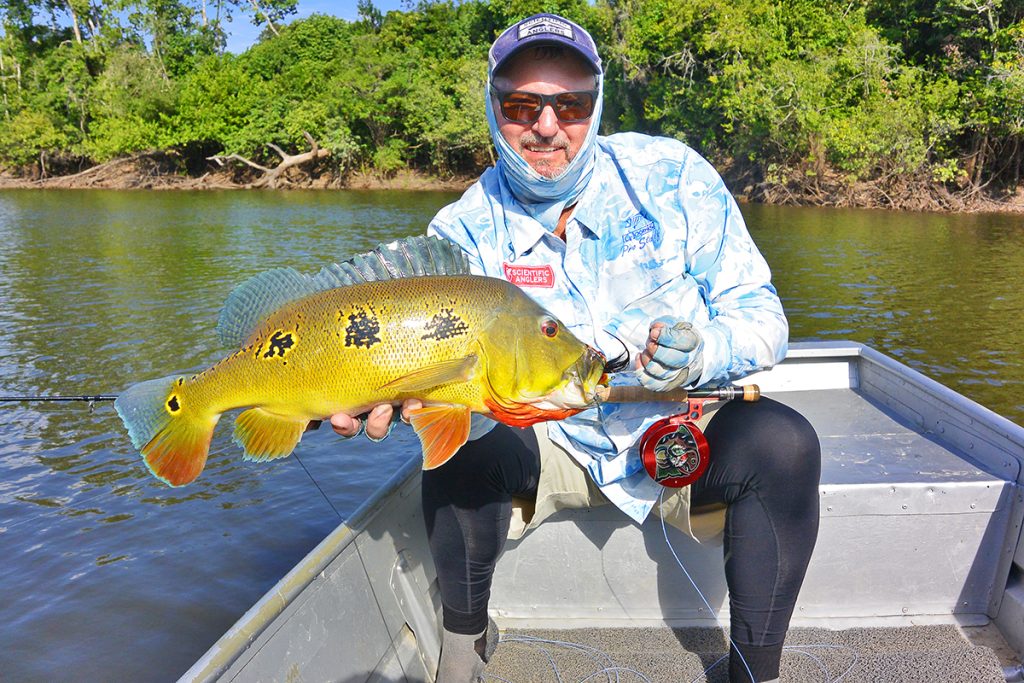
We also caught a couple of different peacock species, including the “Butterfly” peacocks which have three distinct spots down their sides, and Matt also landed a “Royal Peacock”, which has an amazing lateral line that looks more like a heart monitor. We also caught bicuda, which is like a freshwater barracuda and the largest of the piranha species, the black piranha and a few species of catfish as well.
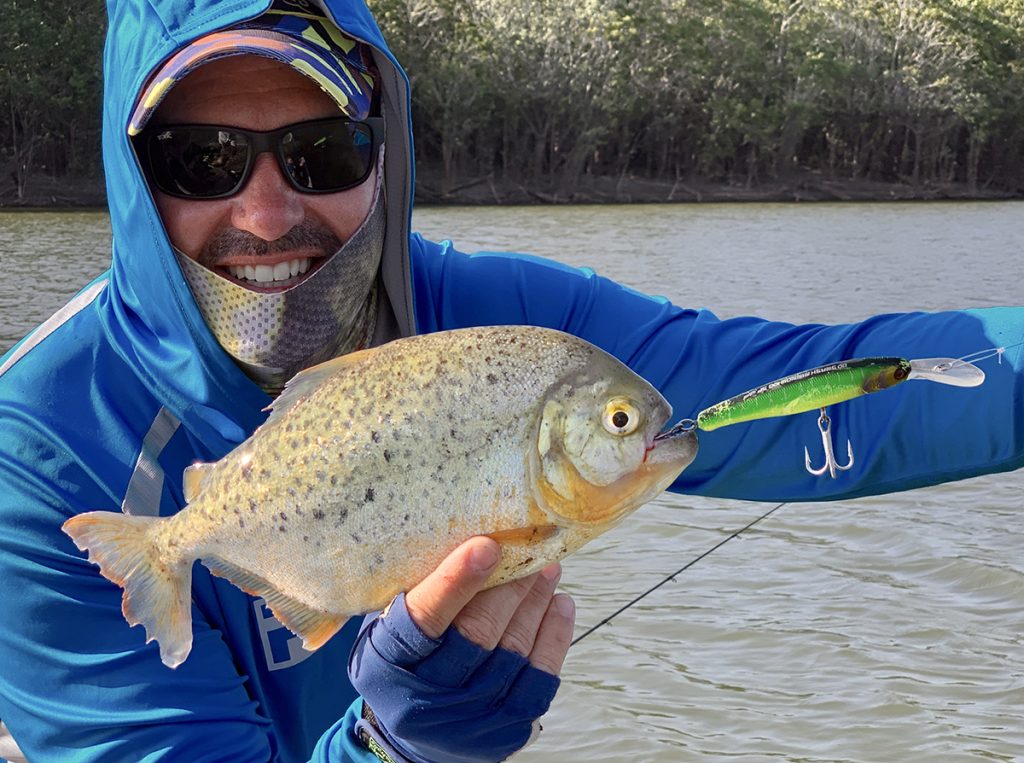
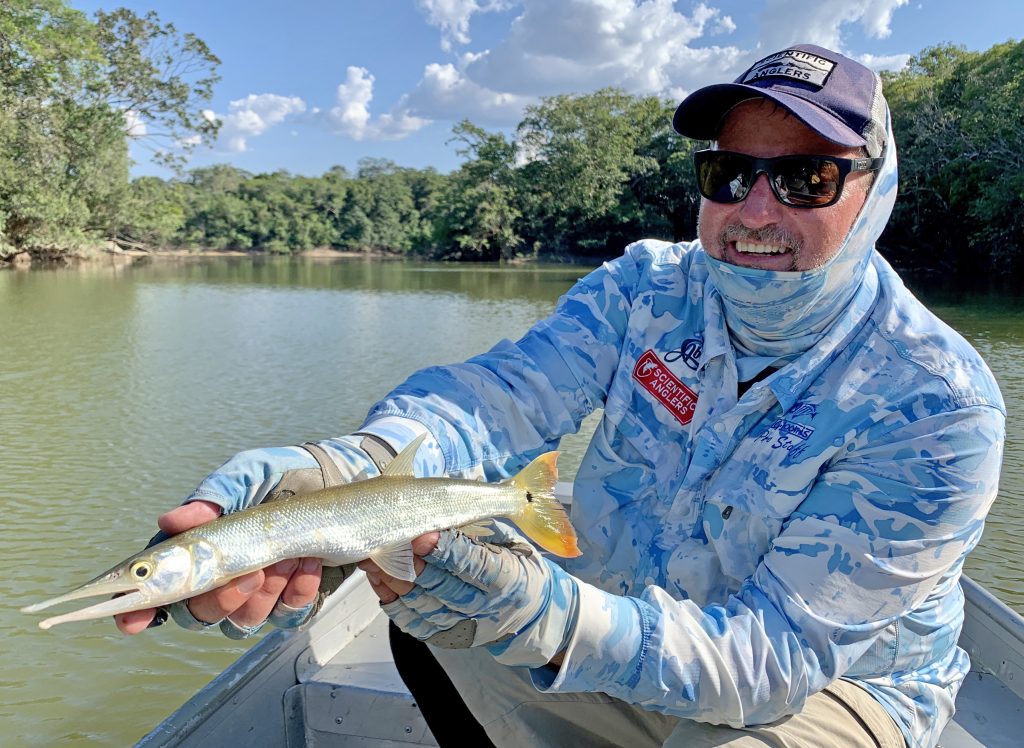
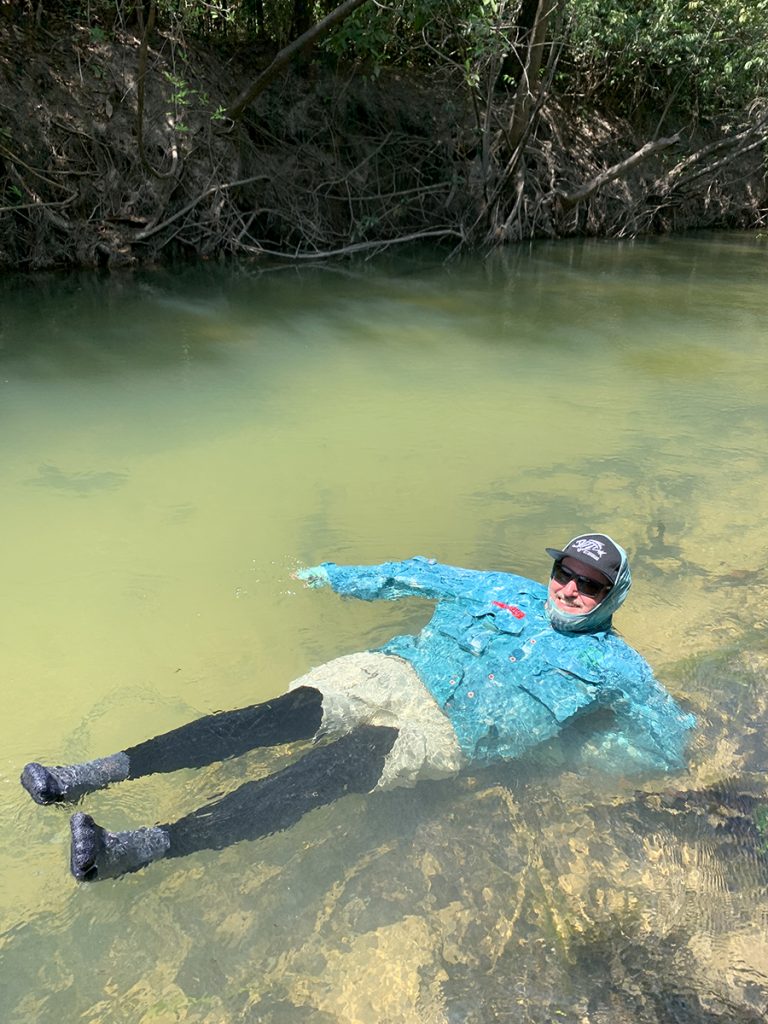
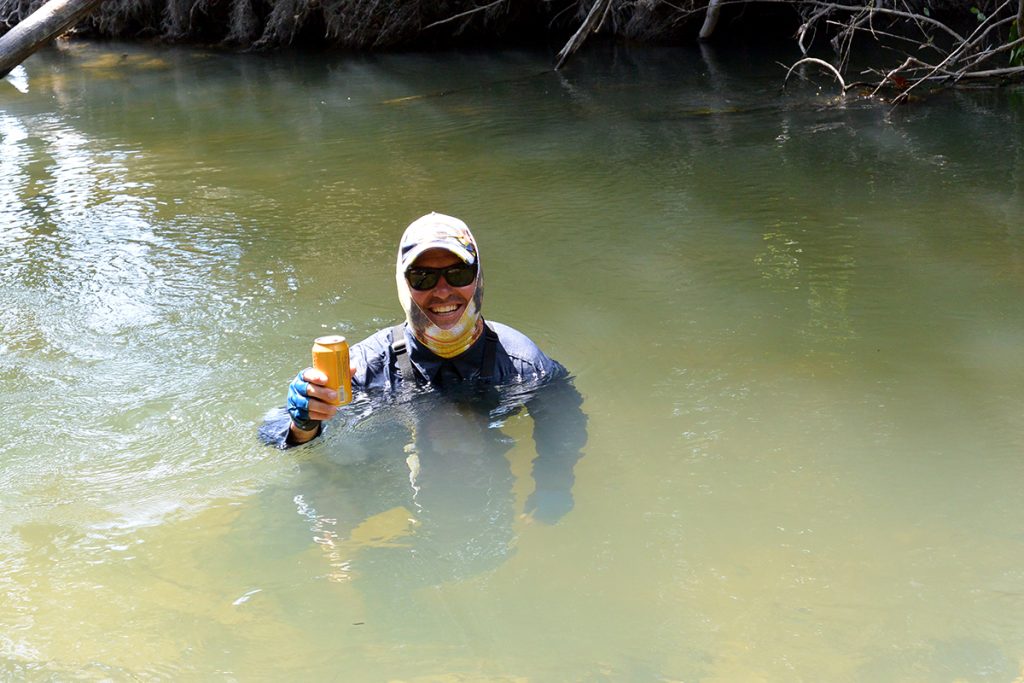
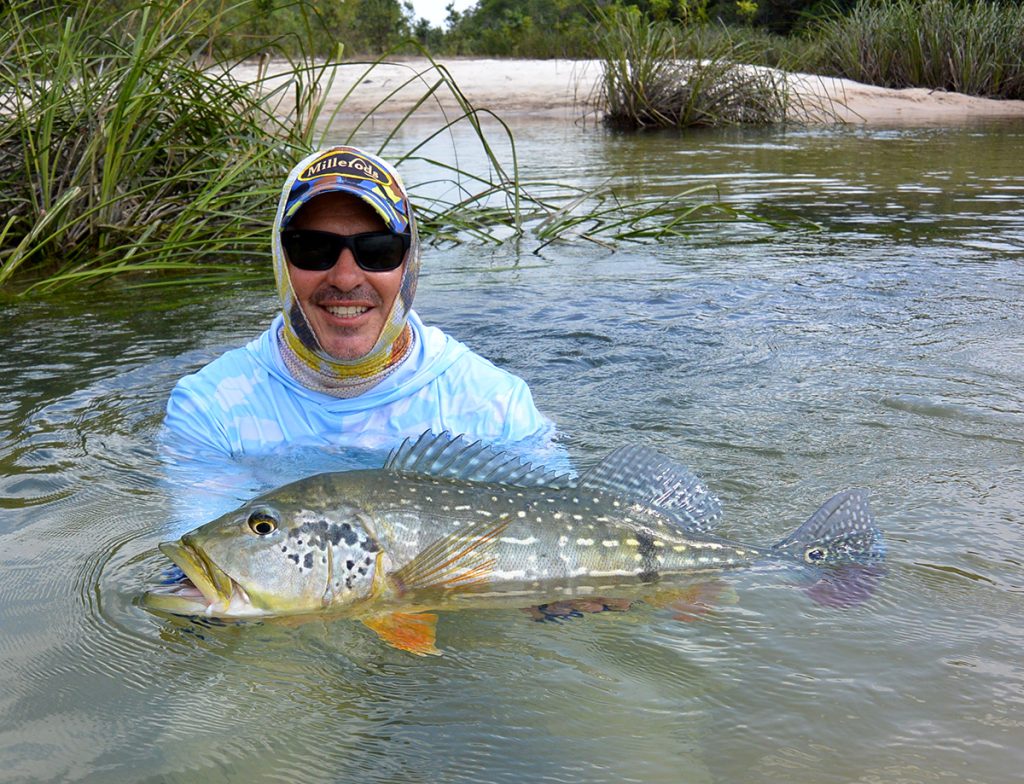
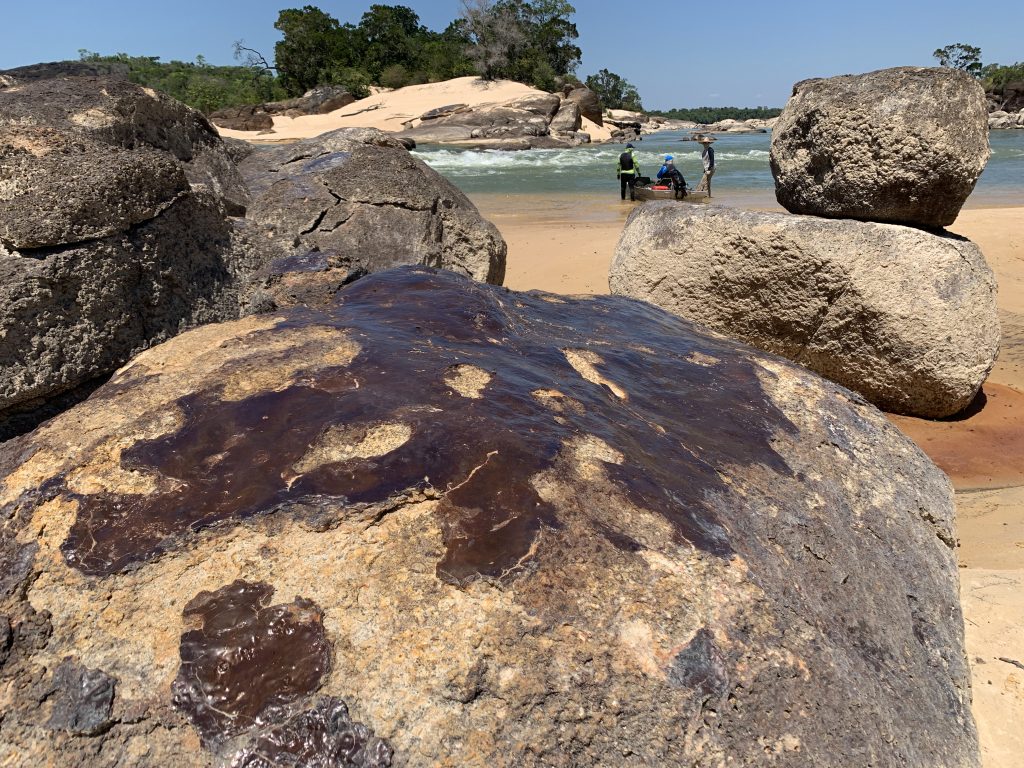
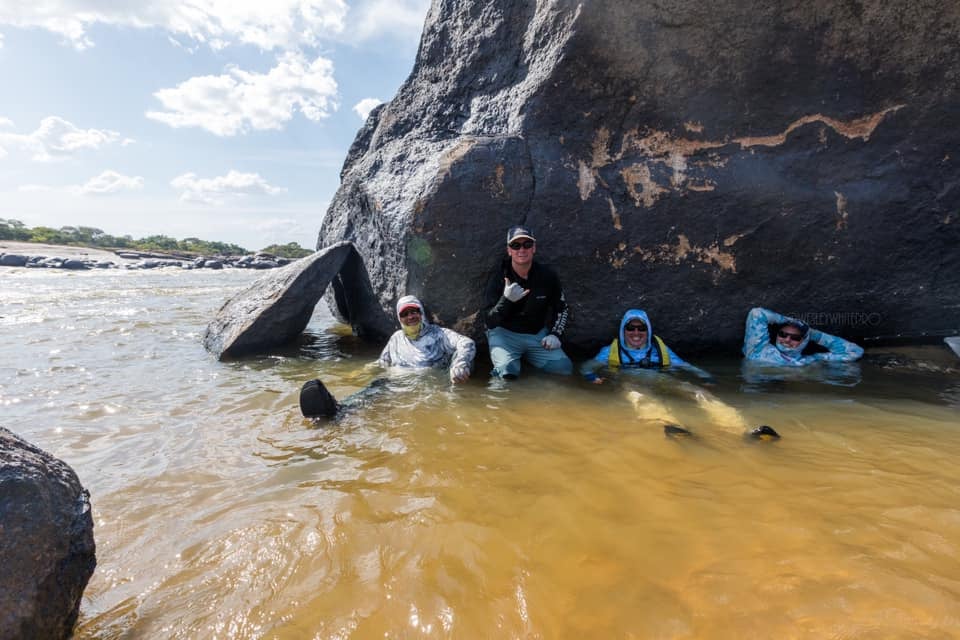
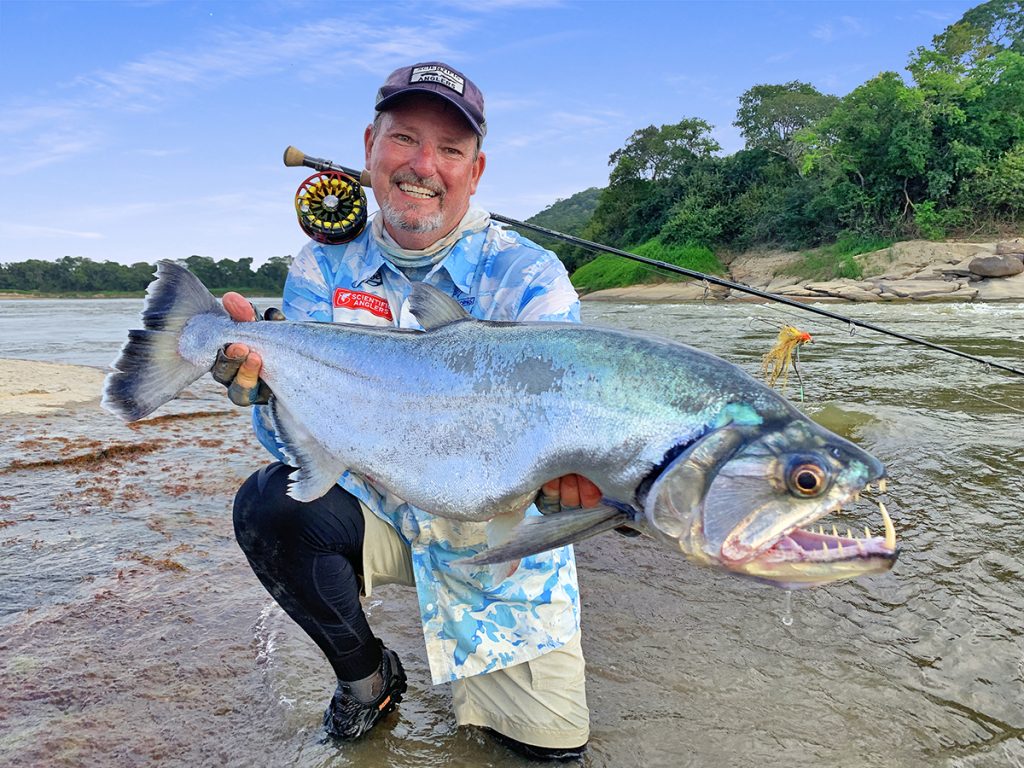
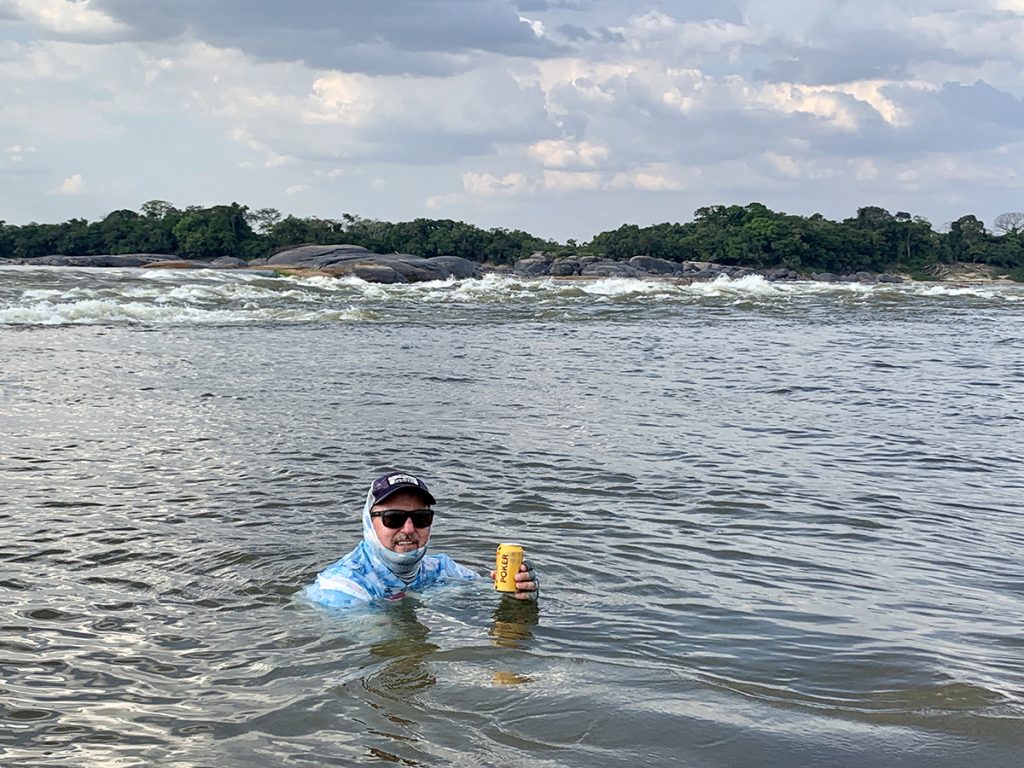
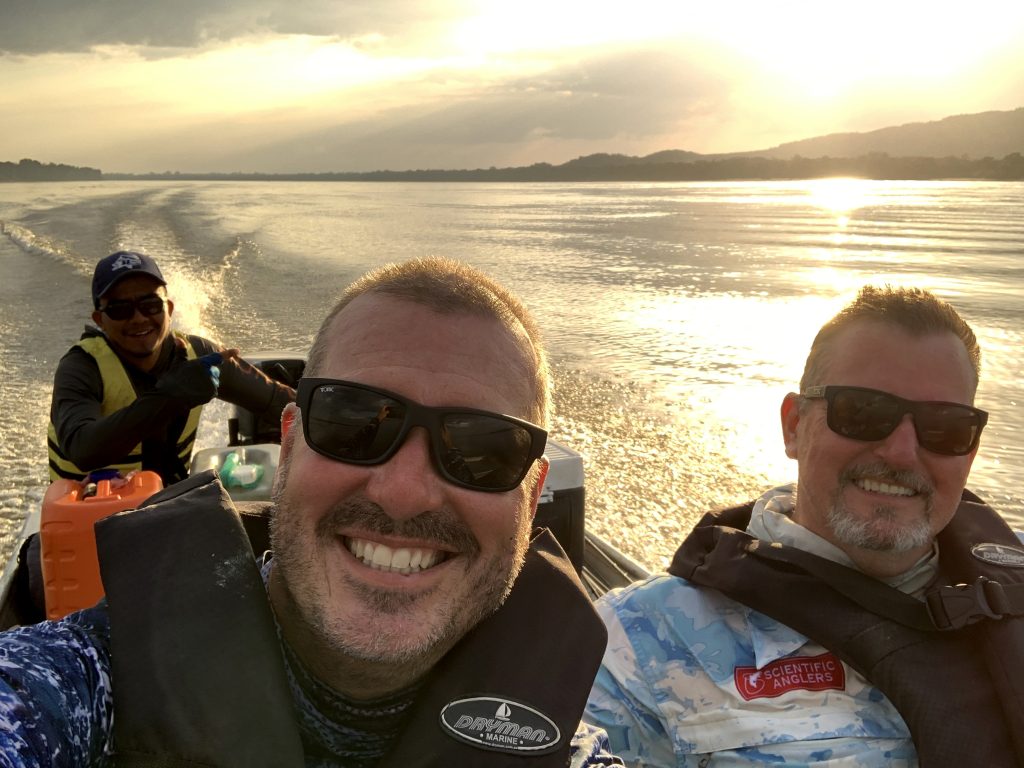
Well – that’s a wrap!
After six full days of peacock bass fishing, we worked our way back downstream to the Orinoco Lodge to finish up with our last two days of Payara and Sardinata fishing. The river had dropped significantly during the week we had been away, but we all managed some more great Payara and Sardinata sessions. I landed my best Payara for the trip in the last hour of our last day with a lovely fish that would have given 20 lbs a nudge. I finished this fantastic trip sitting in a small set of rapids enjoying a cold “Poker”, the local beer, reflecting on what had truly been a trip of a lifetime, surpassing my expectations. Given the world we now find ourselves living in due to Covid-19, I appreciate how lucky we were to have had this experience, and I suggest that as soon as we can travel again, you need to put this trip on your to-do list.
